Wondering how to shield your outdoor wood furniture from the elements? Discover expert tips and techniques to keep your patio set looking pristine all year round!
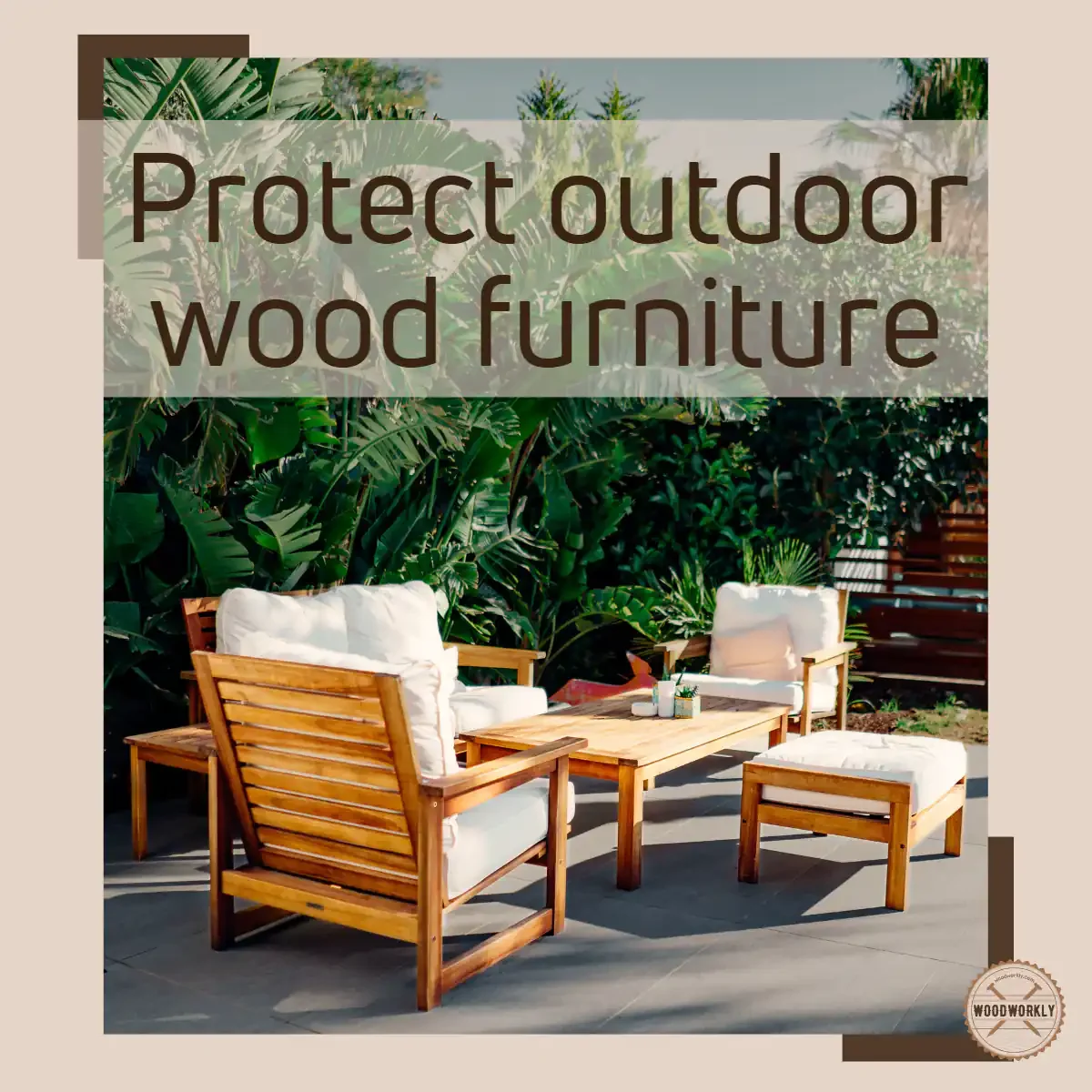
Outdoor wood furniture continuously faces temperature variations, humidity, rain, sunlight, wind, and many other outdoor elements throughout the year.
You are watching: 6 Best Methods to Protect Outdoor Wood Furniture (2023 Guide!)
As a result, outdoor furniture tends to crack, scratch, discolor, and deteriorate more quickly than indoor wood furniture.
When I was making my first expensive outdoor patio furniture set, I was afraid of ruining it because of the outdoor elements.
So, I researched and was eventually able to know the methods of protecting outdoor furniture from elements by experience.
So, here’s How to protect outdoor wood furniture from elements?
Outdoor wood furniture can protect from elements by painting, sealing, varnishing, changing locations to minimize exposure to elements, waterproofing, using covers and shelters, and with regular maintenance and cleaning. These methods help to increase the lifespan of outdoor wood furniture and avoid wood from rotting due to elements.
But that’s a quick snapshot. There is a lot more you need to know about protecting outdoor wood furniture from elements.
We all know that Mother Nature can be a harsh mistress, but don’t worry, I’ve got you covered.
Let’s dive into the various elements that can impact your precious wooden furniture, and then we’ll explore some effective strategies to keep them safe and sound.
So, grab your favorite cup of joe, and let’s get started!
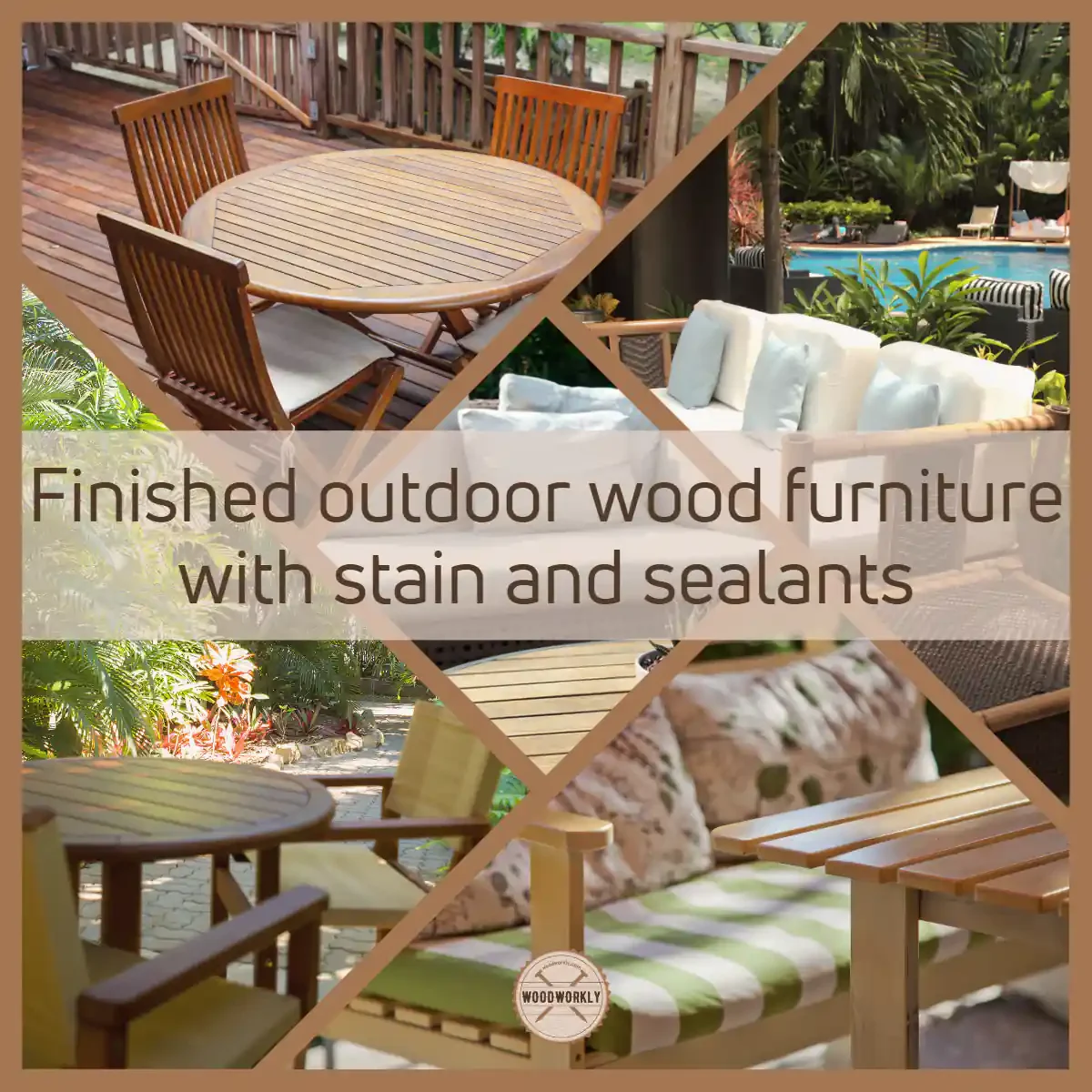
Understanding the Elements that Impact Outdoor Wood Furniture
There’re several elements that impact your outdoor wood furniture. Those elements can damage the wood and cause wood to rot and decay.
Here’re some elements that impact outdoor wood furniture,
- Sun and UV rays
- Rain and moisture
- Temperature fluctuations
- Wind and debris
- Insects and pests

So, let’s discuss the impact of each of the above elements on the lifespan of our outdoor wood furniture.
Sunshine and UV Rays
First up, let’s chat about the giant, luminous orb in the sky – the sun. While basking in sunlight on a balmy summer day is a pleasure, prolonged exposure can be detrimental to your outdoor wood furniture.
UV rays can break down the wood fibers, resulting in weakened, discolored, and fragile wood over time.
I once owned a stunning teak patio set that I left unprotected, and trust me, it was a sorry sight after a few years of constant sun exposure.
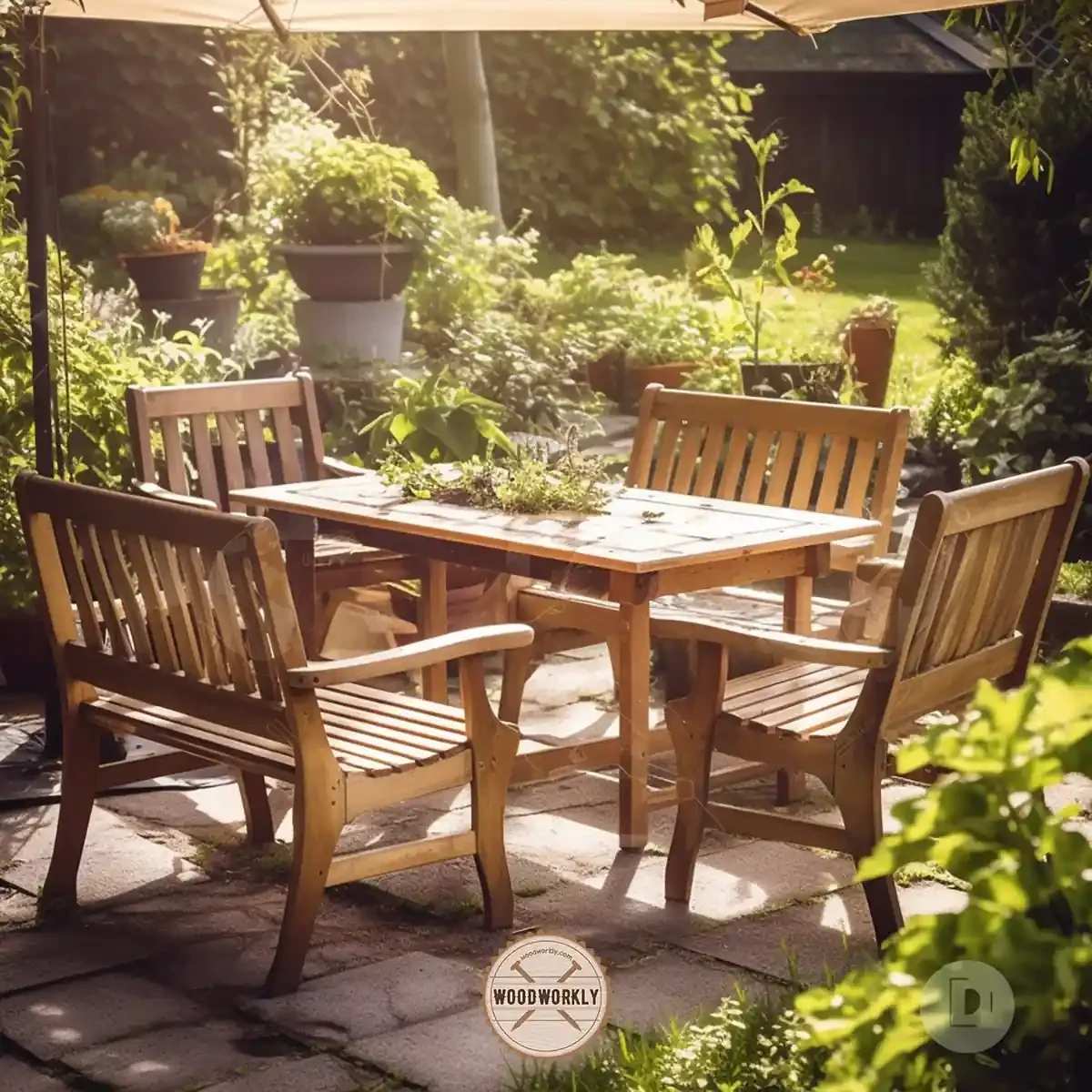
Rain and Moisture
Next in line, we have rain and dampness. I don’t know about you, but I find the pitter-patter of raindrops on my porch quite calming.
However, when it comes to wooden furniture, an excess of moisture spells trouble.
Water can infiltrate the wood, leading to swelling and warping, as well as potential rot and mildew.
A friend of mine once had a charming cedar bench that was left out in the rain, and by the season’s end, it had turned into a soggy, mold-ridden disaster.
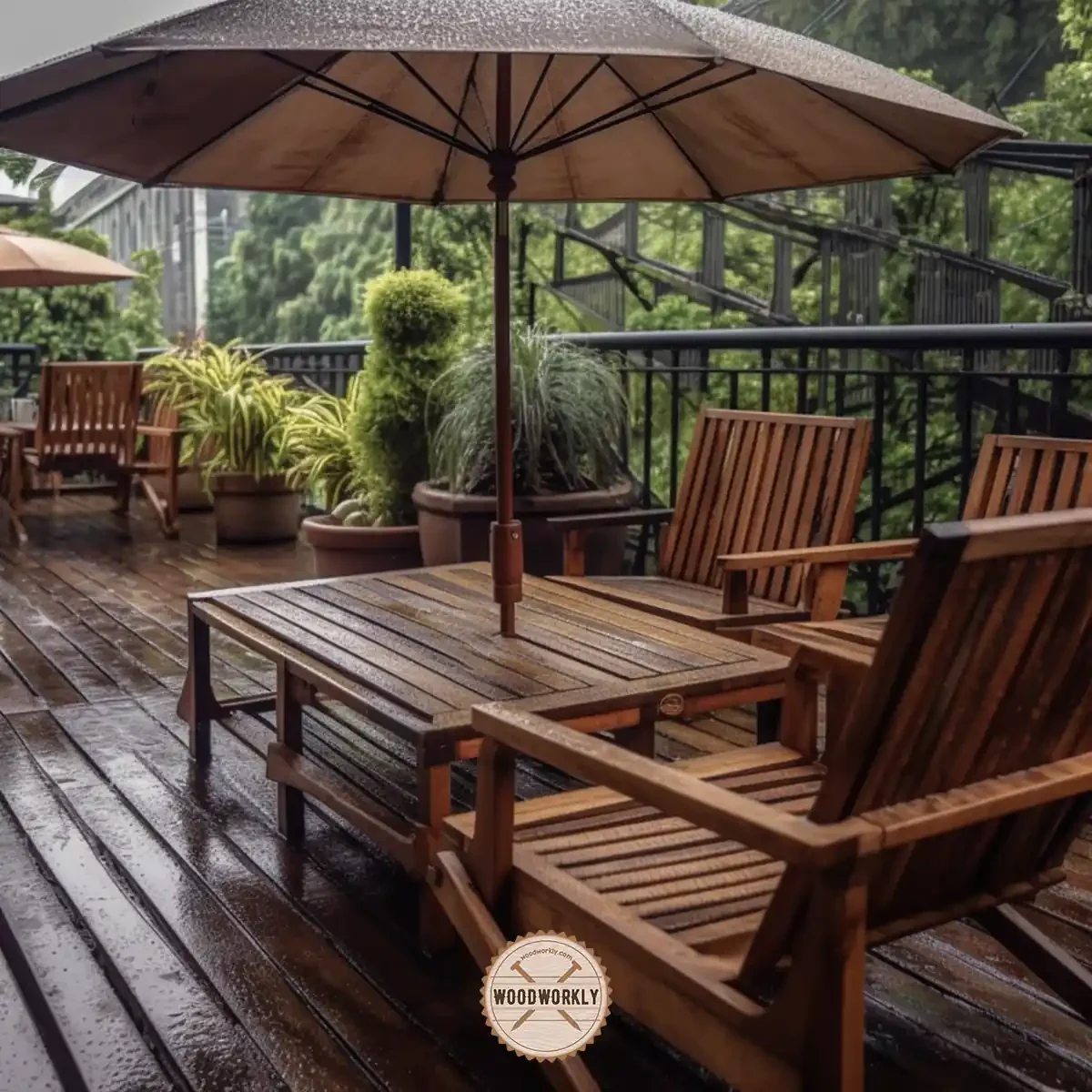
Temperature Fluctuations
Another aspect to consider is temperature shifts. Weather can be quite fickle, and abrupt changes in temperature can damage your outdoor wood furniture.
The continuous expansion and contraction of the wood due to temperature fluctuations can result in cracking and splitting over time.
I once owned a magnificent redwood picnic table that couldn’t withstand the temperature changes in my region, and sadly, its lifespan was cut short.
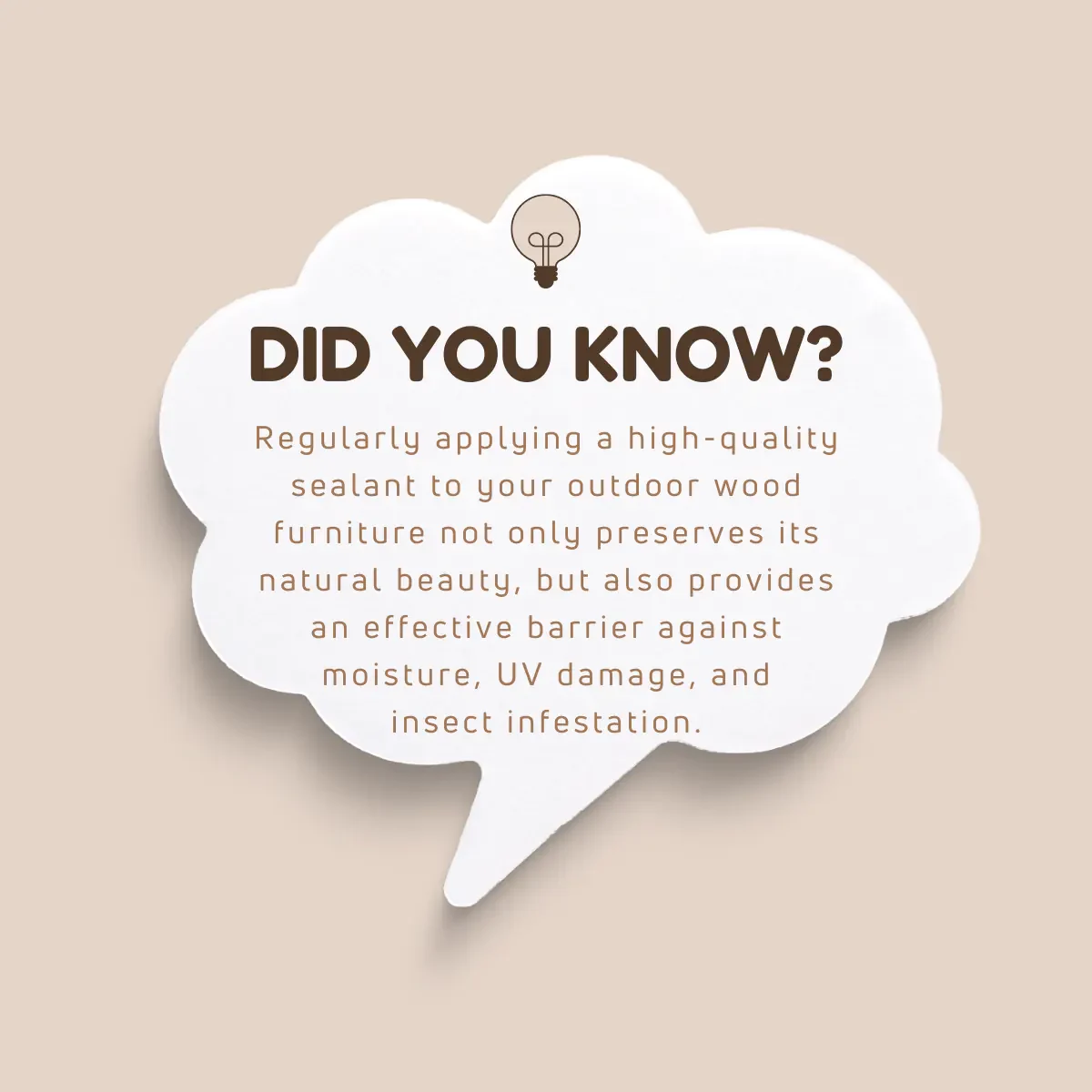
Wind and Debris
Lastly, let’s address wind and debris. Powerful gusts can topple furniture, causing scrapes, dents, or even breakage.
Moreover, airborne debris like leaves, branches, and dirt can cause abrasion and wear down the protective finish on your wood furniture.
I’ve witnessed stunning outdoor furniture sets destroyed by a single storm, and believe me, it’s an experience you’ll want to avoid.
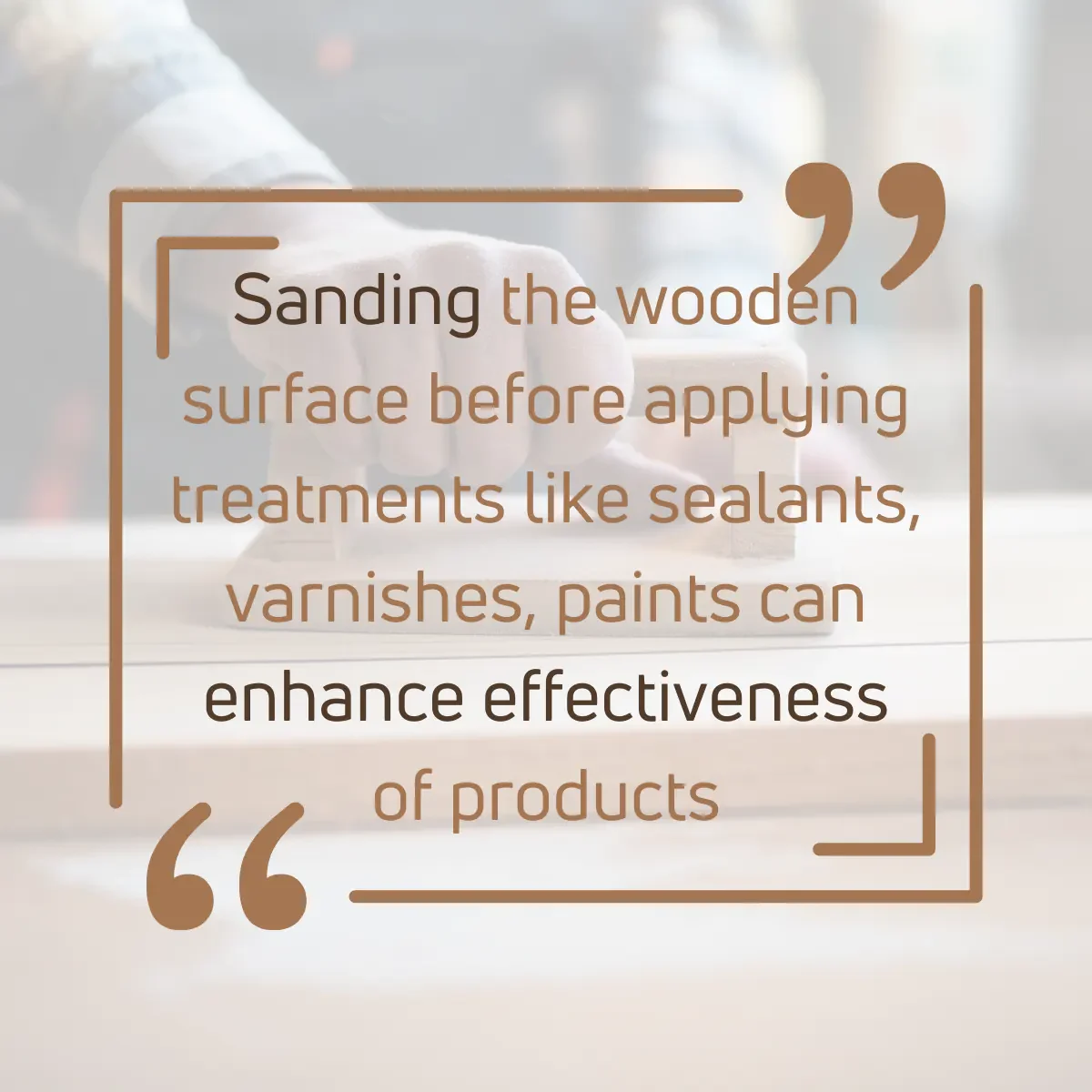
Insects and Pests
Wooden furniture can also fall prey to insects and pests.
Termites, carpenter ants, and wood-boring beetles can cause severe damage to your furniture, compromising its structural integrity.
I’ve seen outdoor furniture sets destroyed by these pesky invaders, and believe me, it’s an experience you’ll want to avoid.
Now that we’ve delved into the various factors that can impact your outdoor wood furniture, it’s time to explore some protective measures to ensure their durability.
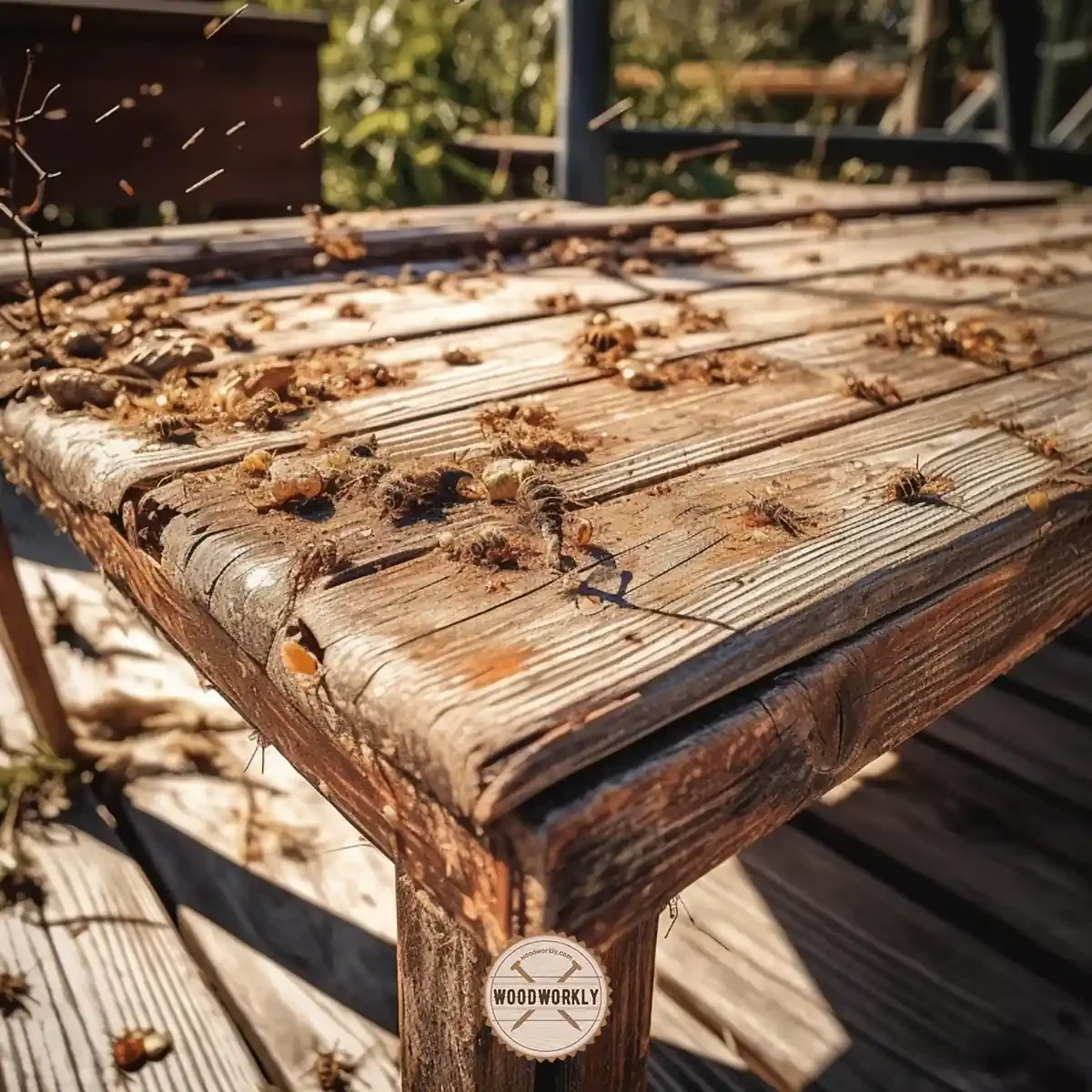
In the following section, we’ll share some proven tips from experienced woodworkers like myself to help you maintain your furniture’s splendor all year round.
Stay tuned, and let’s work together to preserve your outdoor haven!
Choosing the Right Wood for Outdoor Furniture
Hello again, my fellow woodworkers and outdoor enthusiasts! We’ve already discussed the different types of elements that can impact your outdoor wood furniture.
So now it’s time to talk about the importance of choosing the right wood type.
I can’t explain enough how beneficial and crucial having the right wood is in ensuring the longevity and beauty of your outdoor wood furniture.
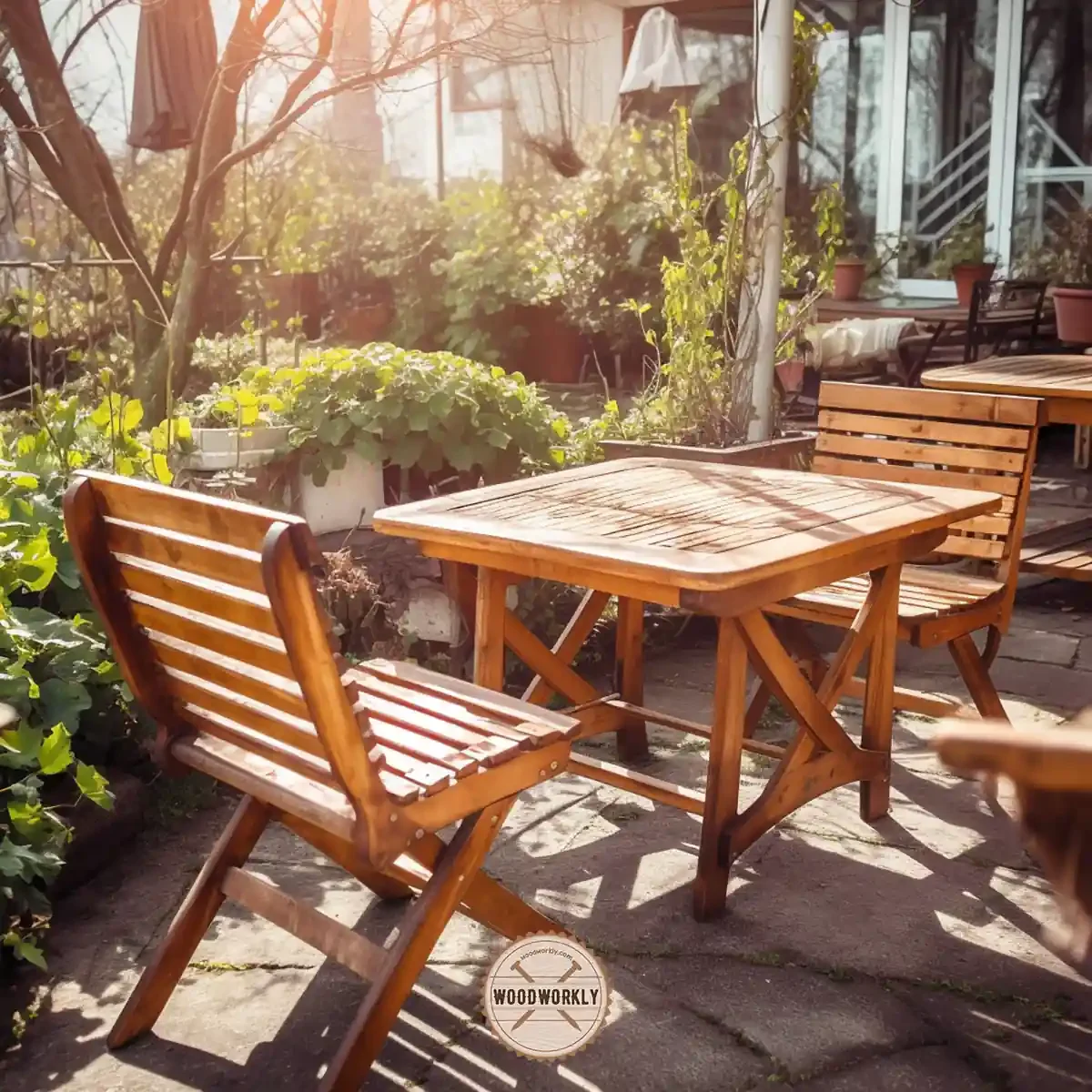
Some woods have excellent tolerance from outdoor elements like moisture, insect attacks, and extreme weather conditions while some don’t.
Therefore, it is important to select the wood that serves you well without worrying less about regular maintenance and restorations.
So, let’s dive into the world of wood and explore some popular options, their characteristics, and expert tips for their proper use.
Types of Wood Suitable for Outdoor Use
Several wood types excel in outdoor settings due to their innate resistance to the elements and impressive durability.
Here’re some of the best wood types suitable for outdoor use,
- Teak
- Cedar
- Redwood
- Eucalypts
- Acacia
Let’s explore the characteristics, and features of the above woods that help them to resist outdoor elements in detail.
Teak
Teak is a sought-after choice for outdoor furniture, and it’s no wonder why! This hardwood naturally resists moisture, insects, and decay, making it perfect for outdoor use.
It also requires minimal maintenance and ages beautifully into a lovely silver-gray shade.
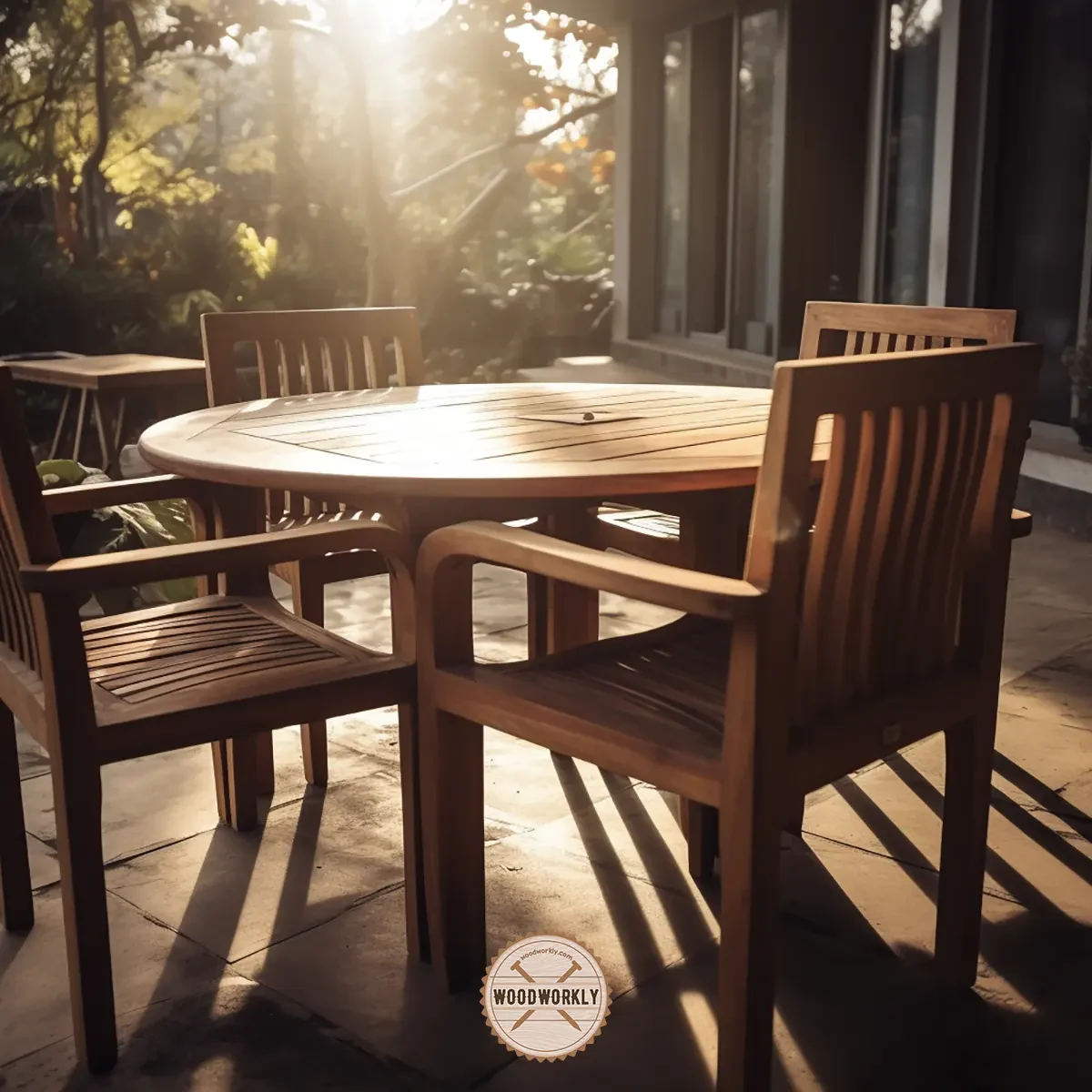
Cedar
Cedar is another fantastic option. This softwood is lightweight, rot-resistant, and has a pleasant aroma that deters insects. Its natural oils also help protect it against moisture and mildew.
However, cedar needs regular maintenance, such as staining or sealing, to preserve its attractive color and prevent it from turning gray.
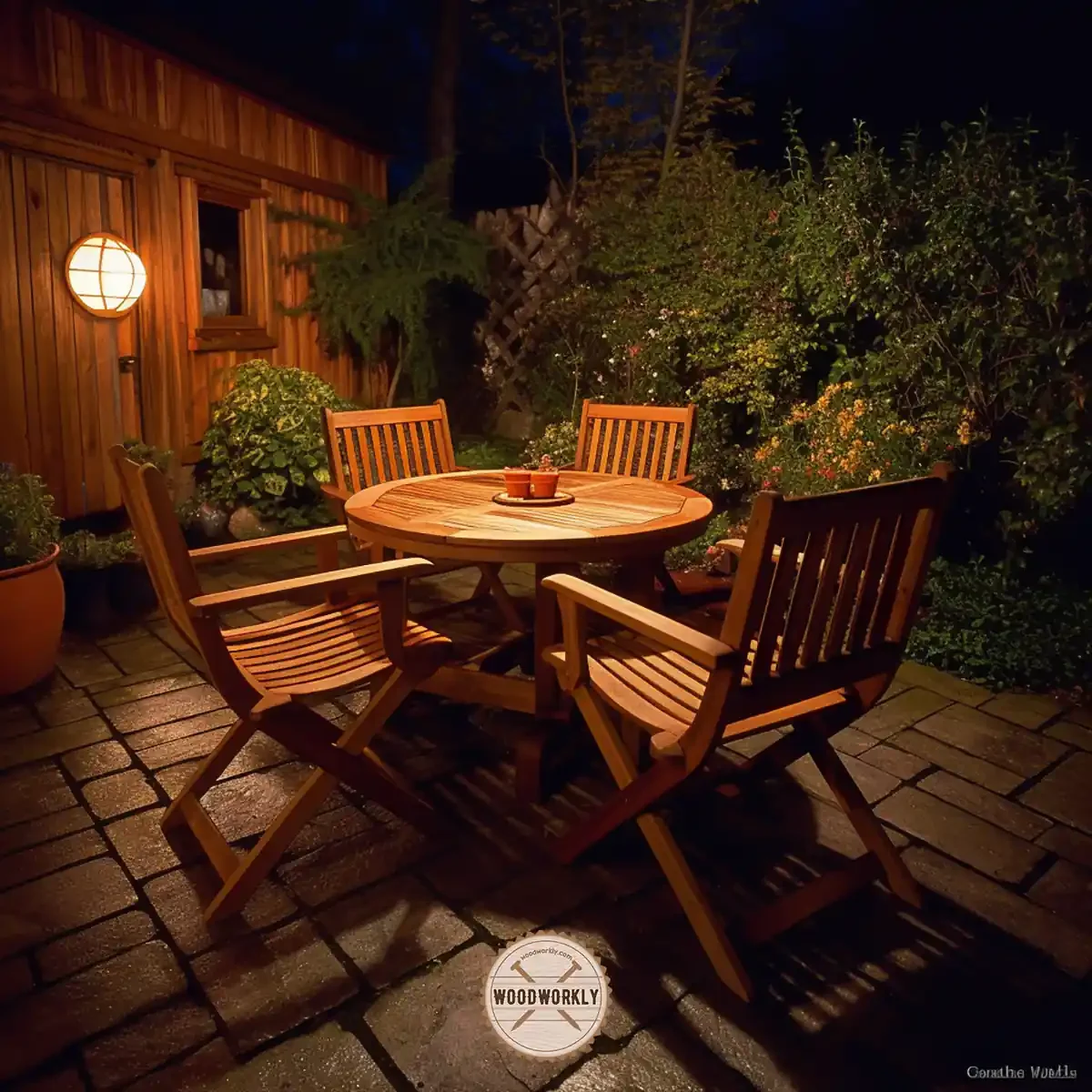
Redwood
Redwood is a sturdy and long-lasting option for outdoor furniture. It’s naturally resistant to decay, insects, and warping.
Like cedar, redwood requires some maintenance, including staining or sealing, to maintain its vibrant, reddish hue and prevent it from turning gray.
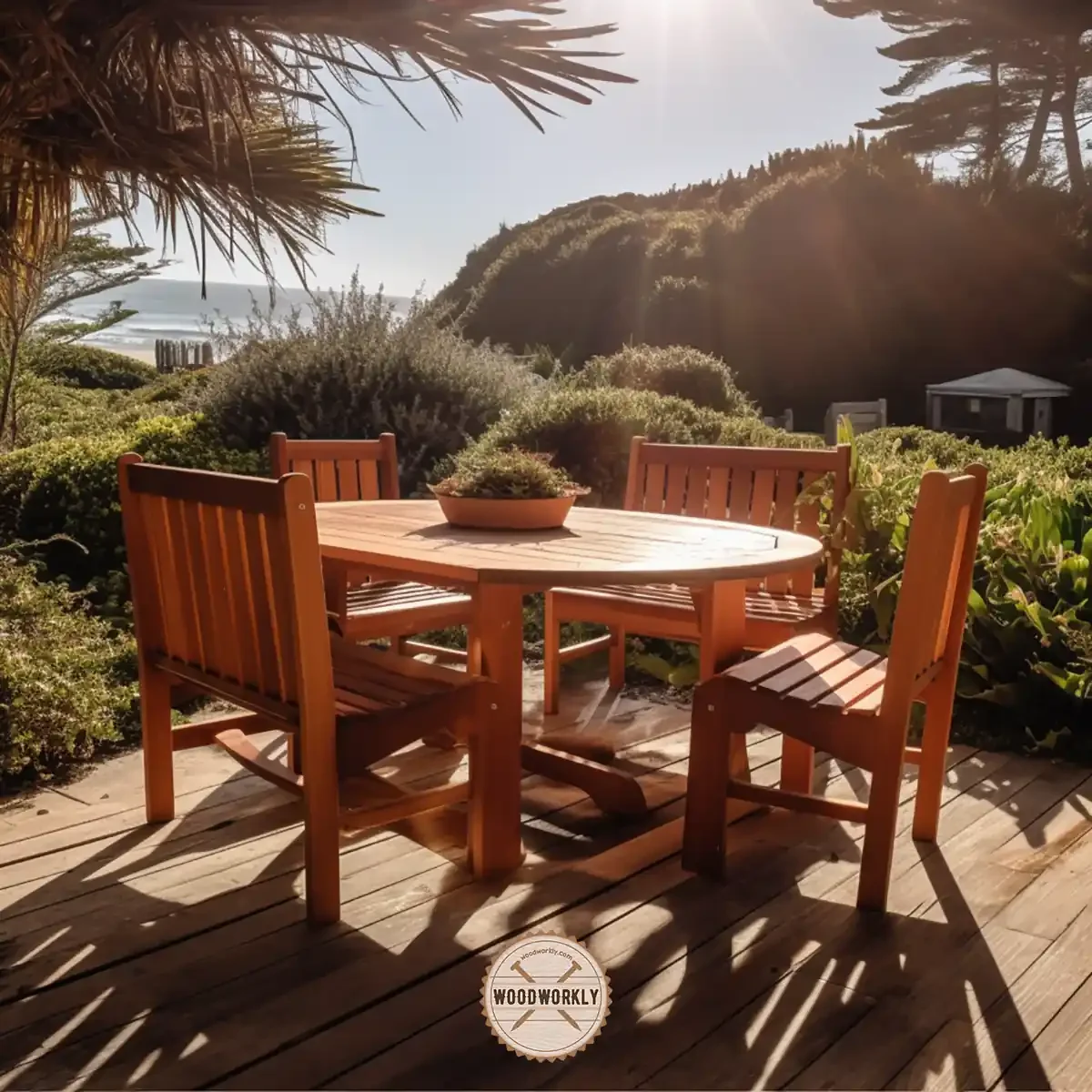
Eucalyptus
Eucalyptus is an eco-friendly and sustainable choice, thanks to its quick growth rate. This hardwood naturally resists moisture, decay, and insects, making it an excellent choice for outdoor furniture.
To maintain its color and protect it from the elements, eucalyptus needs occasional oiling.
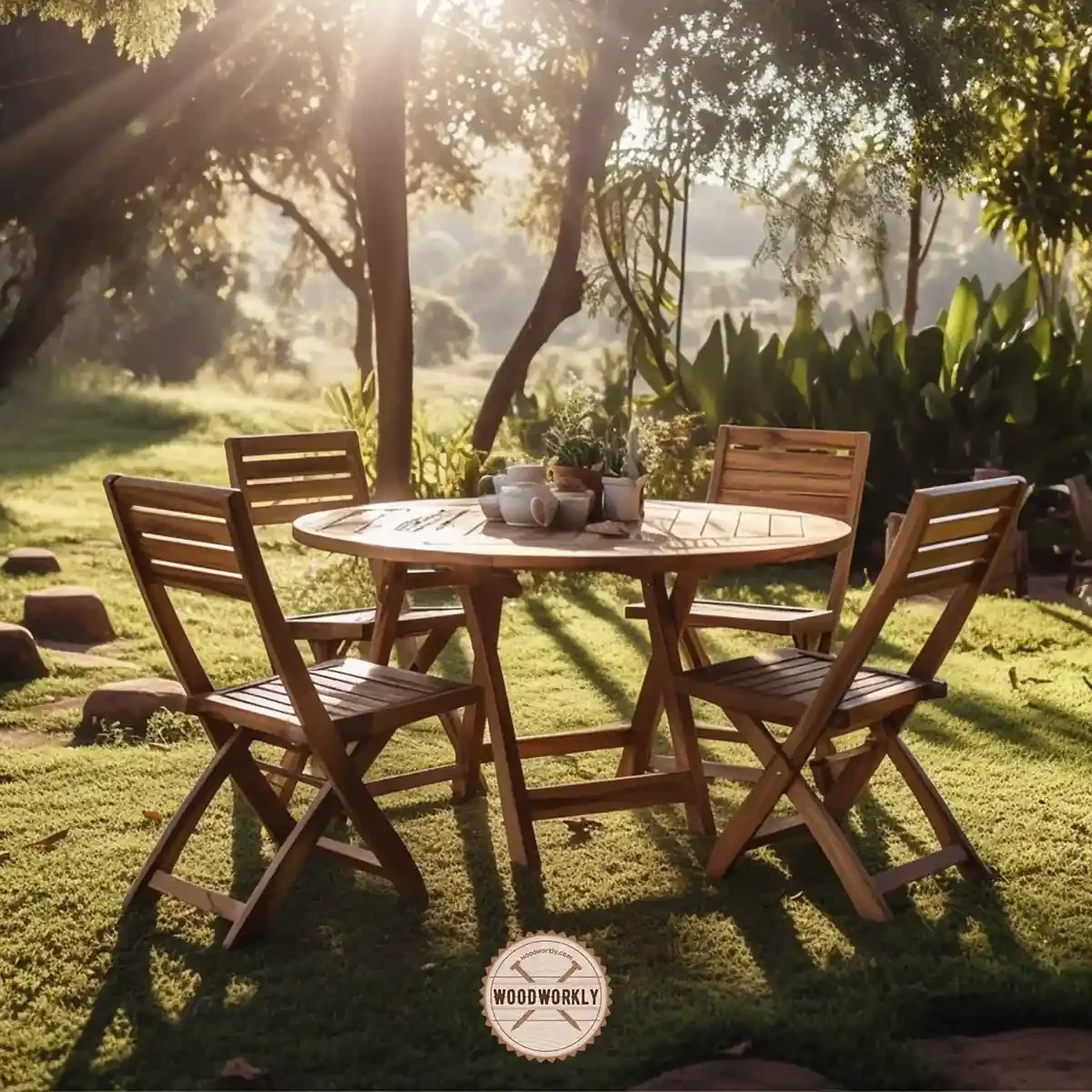
Acacia
Acacia is another superb hardwood for outdoor furniture. Acacia wood is durable, moisture-resistant, and has natural oils that help protect it against decay and insects.
Acacia requires periodic oiling to maintain its gorgeous color and ensure its durability.
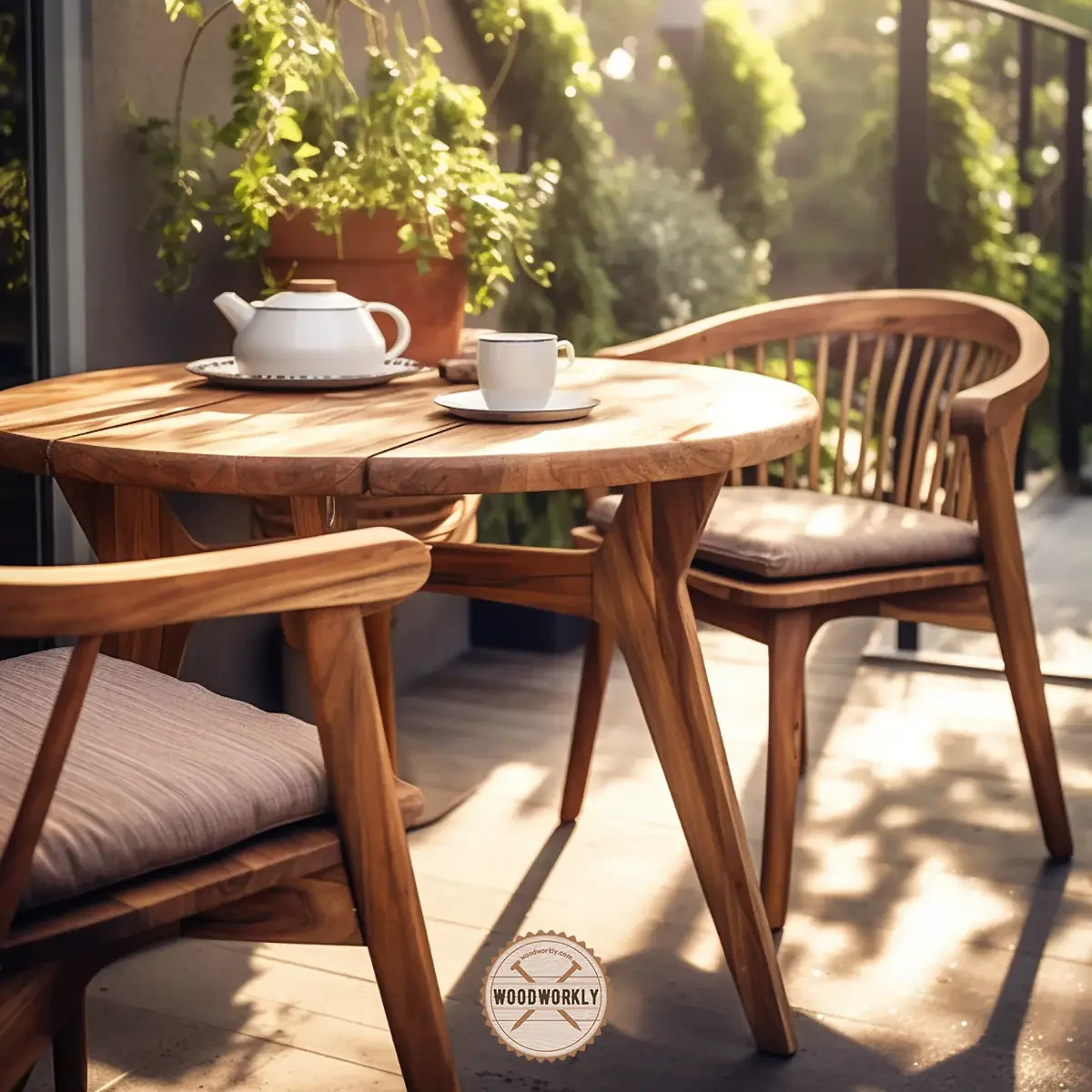
Expert Woodworker Tips to Select Right Wood For Outdoor Furniture
Now that we’ve examined the various wood types suitable for outdoor use, let’s share some valuable advice from seasoned woodworkers like yours truly:
- Properly seasoning the wood: Before using wood for outdoor furniture, ensure it’s adequately seasoned (dried). Seasoned wood is less prone to warping, cracking, or splitting when exposed to the elements.
- Ensuring proper ventilation: When designing and constructing your outdoor furniture, allow for adequate ventilation. This helps prevent moisture buildup, which can lead to mildew, rot, and other issues.
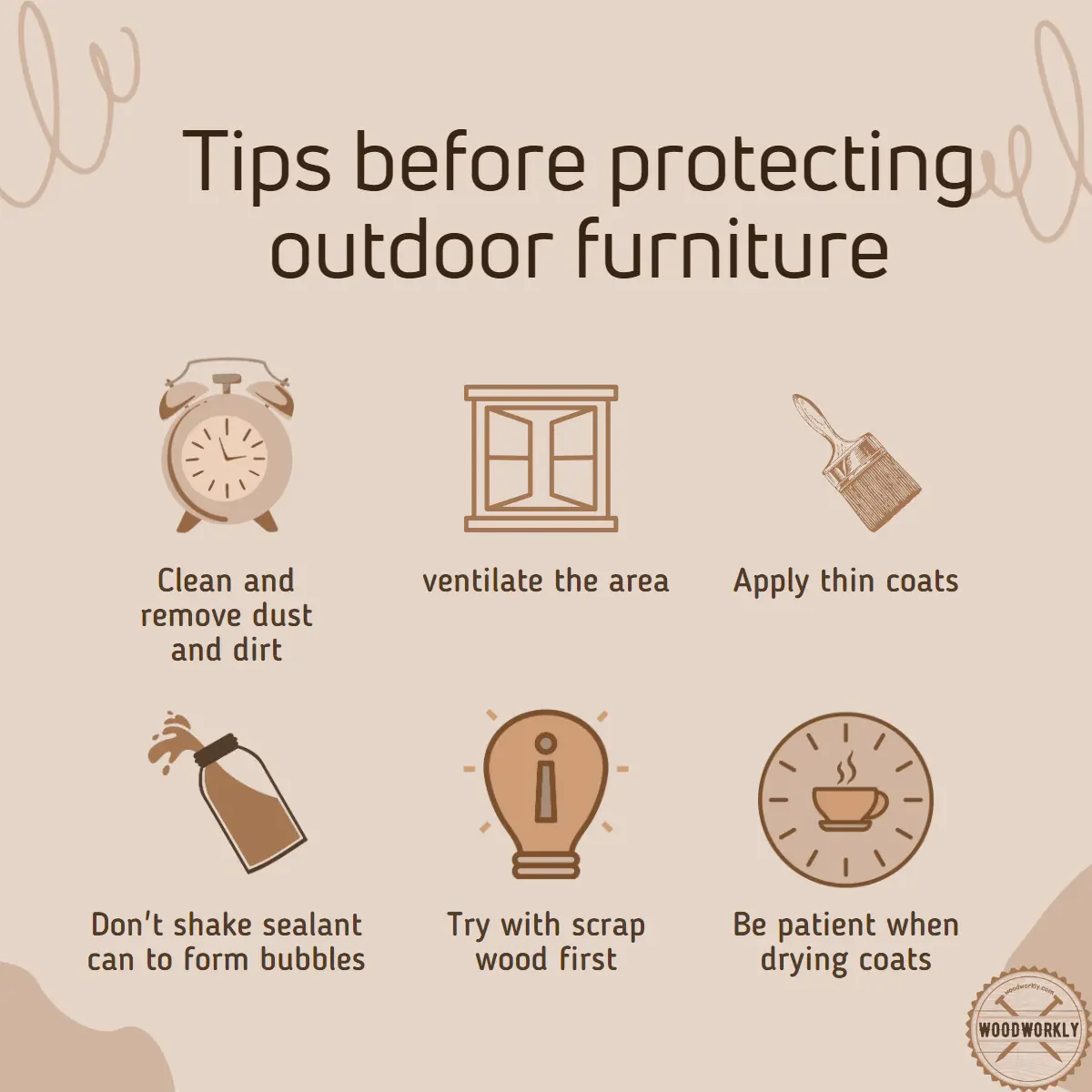
Now you know how to select the right wood for your outdoor woodworking project.
Stay tuned as we continue to share tips and tricks for protecting your outdoor furniture, so you can create the perfect outdoor oasis!
How Do You Protect Wood from Outdoor Elements?
There are several methods you can use to protect wood from outdoor elements. Now it’s time to protect it from the elements.
Here’s the list of methods to follow to protect the wood from outdoor elements,
- Painting the furniture
- Sealing the furniture
- Varnishing the furniture
- Changing the location of the furniture
- Using covers and shelters
- Regular maintenance and cleaning
so, let’s discuss each of the above methods separately to get a clear idea about the ways of protecting your outdoor furniture from elements to improve its lifespan.
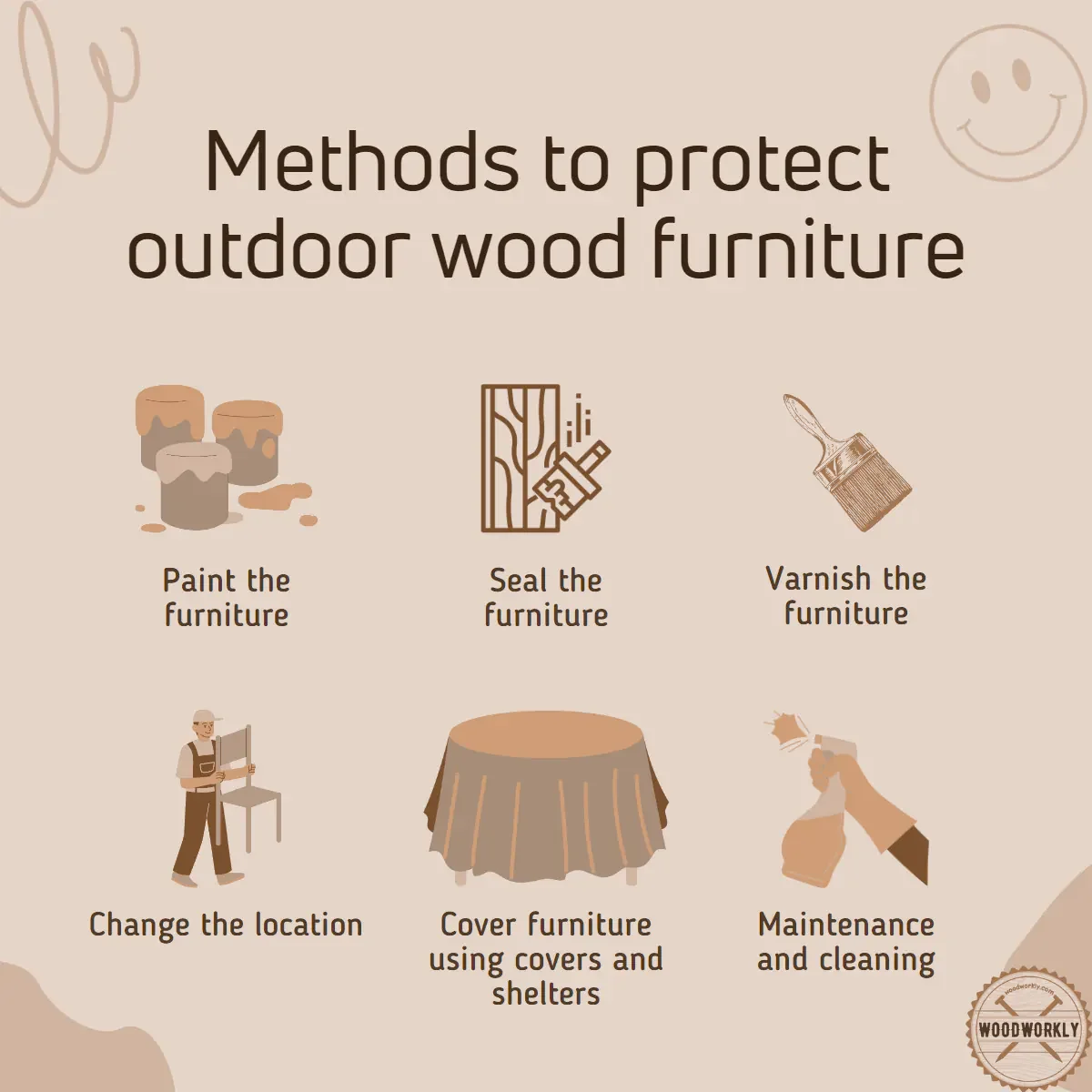
1. Painting Wood Furniture for Outdoor Use
Using paint is a great option to get strong protection from outside elements for your loving wood furniture.
Paint has the ability to block the sunlight from getting into the surface of the wood.
Looking to shield your outdoor wood furniture from moisture and UV damage? Consider painting. Here are your options and how to apply them:
- Acrylic paint: Water-based, quick-drying, and resistant to chipping and fading. Use a brush, roller, or spray.
- Latex paint: Flexible, water-based, and crack-resistant. Apply with a brush, roller, or spray.
- Oil-based paint: Durable, glossy finish, but slow-drying. Use a brush or roller.
But remember, painting hides the natural beauty of your outdoor wood furniture.
Also, paint can block UV and protect the wood underneath from discoloration and many other problems.
In my opinion, latex paint gives better last long protection for outdoor furniture than regular oil-based paints. Latex paints are used as cosmetic fixes and are easy to apply.
Latex paints have massive varieties of colors and hide scratches. A good layer of paint will give better protection from outdoor elements water and UV radiation.
Even after applying paint, you need to check whether your wood has scratches, dents, peelings, or fading once for a few months, and reapply the paint all over the surface.
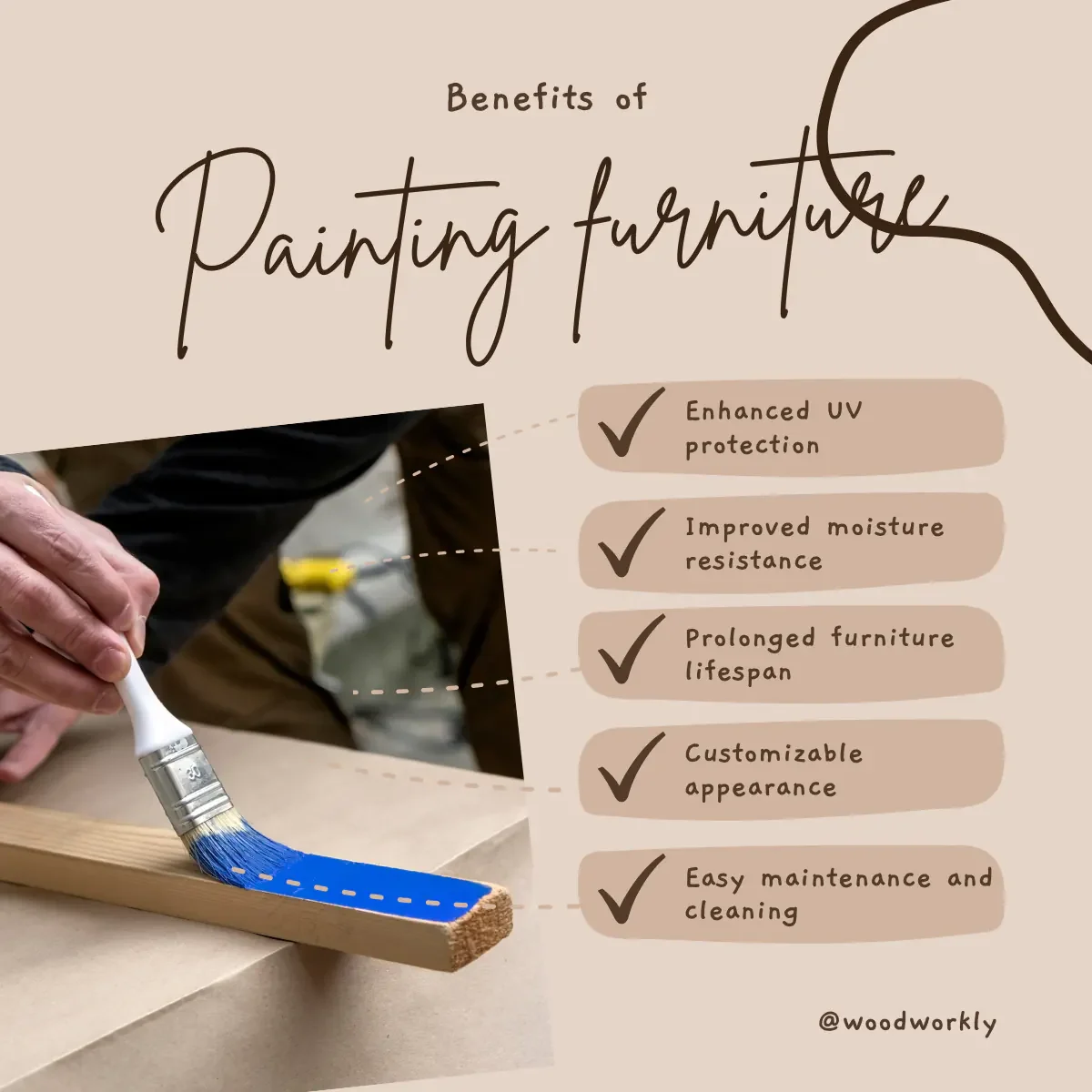
Advantages and Disadvantages of Painting Outdoor Wood Furniture
Here I have listed the advantages and disadvantages you get by applying paint to protect outdoor furniture from the elements.
Because of losing the natural color of wood, some people tend to go with other options to protect the wood from outdoor elements.
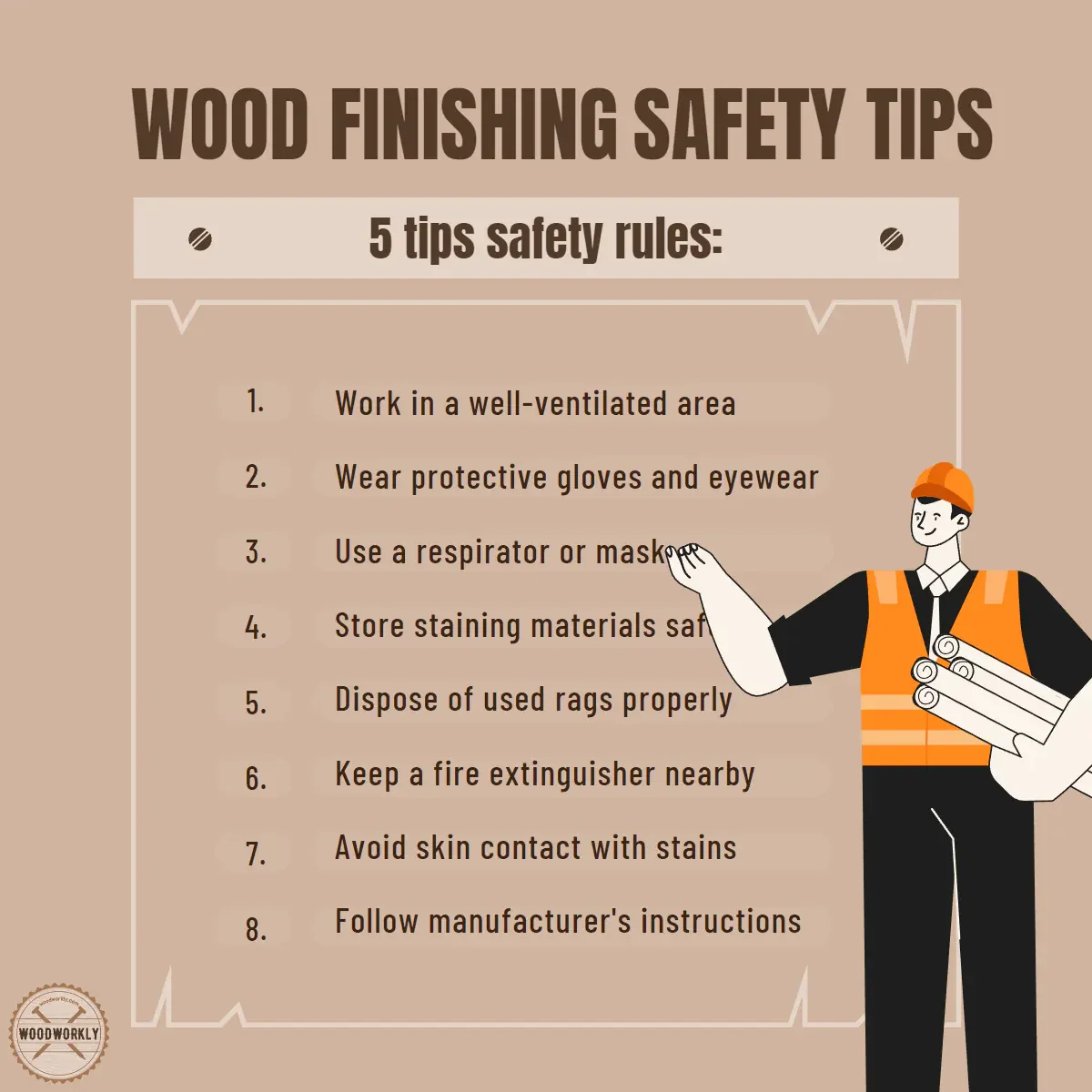
So, let’s talk about how sealing outdoor wood furniture helps to protect it from the elements.
2. Sealing Outdoor Wood Furniture
Sealing is pretty much useful if you live in an area that receives a lot of rain. By applying sealer your outdoor wood furniture will protect from water.
Want protection without compromising looks? Try sealing.
Here’re the sealants that are suitable to protect outdoor furniture from elements:
- Water-based sealants: Fast-drying, easy cleanup. Apply with a brush, roller, or spray.
- Oil-based sealants: Richer finish, better penetration. Use a brush or roller.
- Polyurethane: Durable and UV-resistant. Apply with a brush, roller, or spray.
Keep in mind, sealants require reapplication and may vary in UV resistance.
Most of the time outdoor furniture ruin because of moisture and rain. Water molecules easily penetrate the wood and cause a lot of trouble.
By applying water sealant, the natural look of the wood will never go away like applying paint. Water sealant is transparent and does not change the color of the wood like any other protector.
Never leave any part of your wood furniture unfinished. Seal underneath, joints, and even the bottom of the legs to fill all the cracks.
Plus, make sure to maintain the finished furniture properly for the long run.
Most importantly, sealants not also protect your outdoor wood furniture from moisture, but also allow damp wood within the sealant to speed the drying process.
Read more : Painting Exterior Brick – The Ultimate Guide
This will avoid the rotting, splitting, and warping of the wood.
As you can see sealing outdoor wood furniture gives better overall protection without ruining the natural look of the wood.
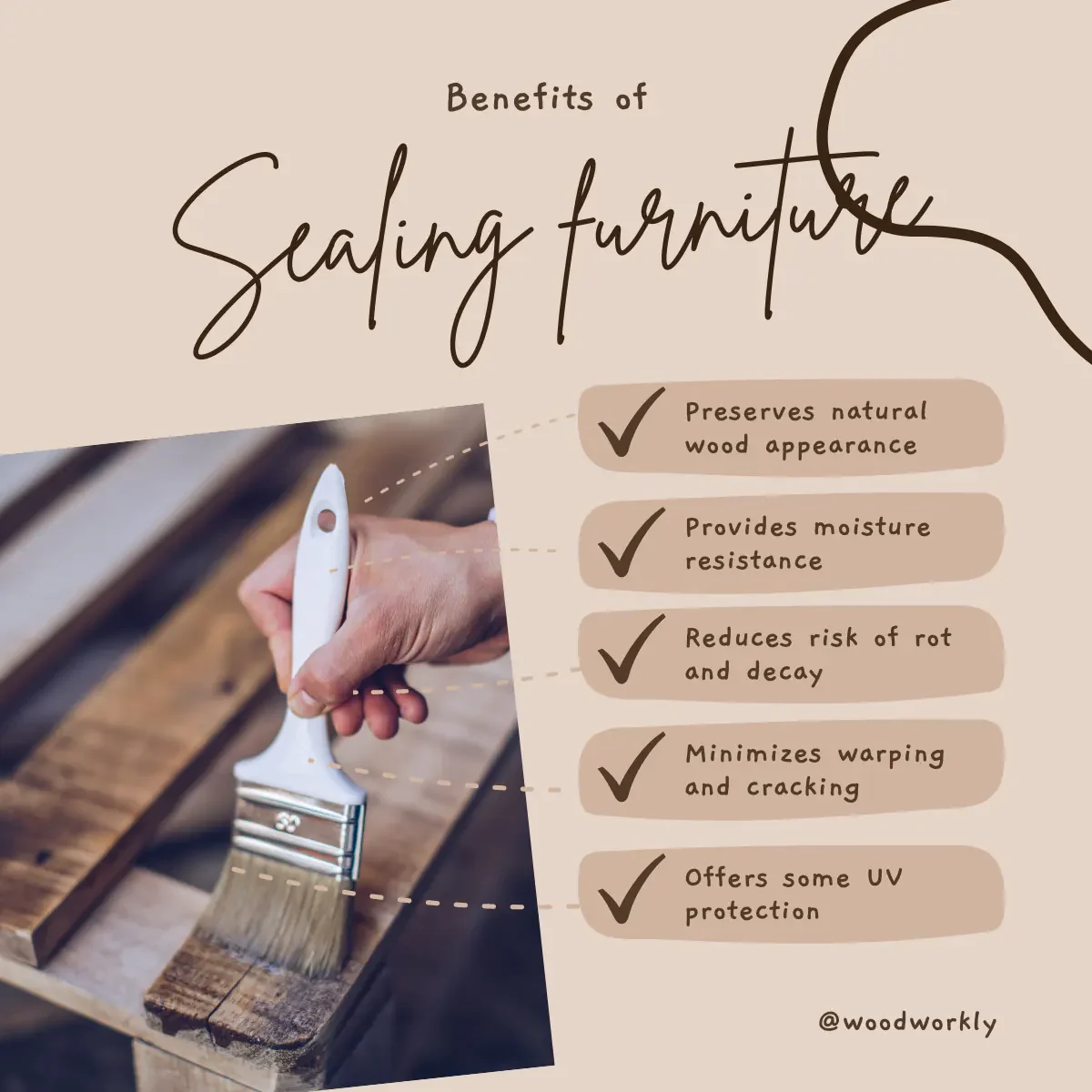
Advantages and Disadvantages of Sealing Outdoor Wood Furniture
So, let’s see what the benefits and drawbacks are of sealing outdoor furniture.
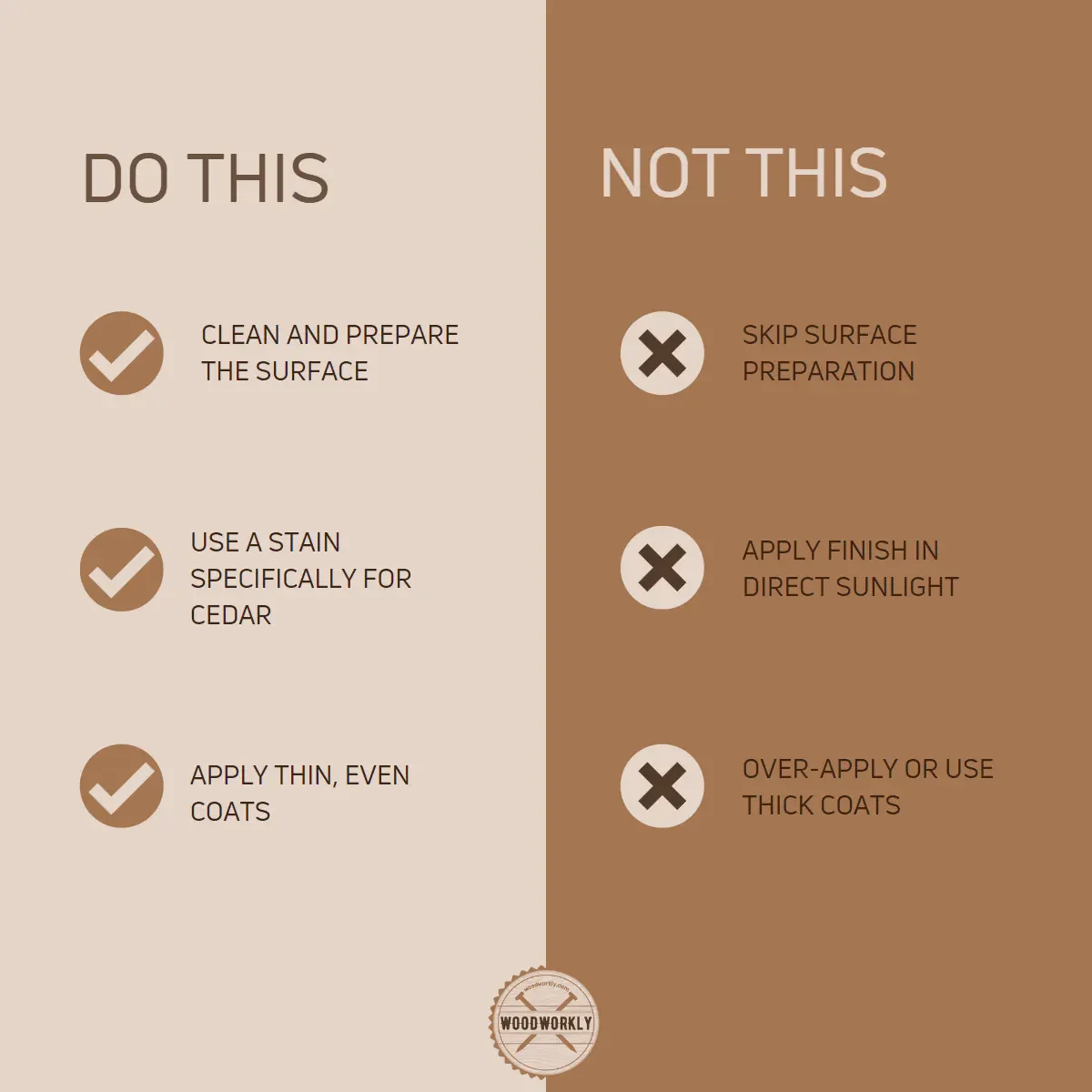
3. Varnishing The Outdoor Furniture
Varnishing is also considered as a type of sealing but there is a lot more to specialize about varnishing.
For UV protection and beauty enhancement, varnishing is your answer.
Check out varnishing options for your outdoor furniture:
- Exterior varnish: Designed for outdoor use. Apply with brush, roller, or spray.
- Marine or spar varnish: Great for marine environments, offering extra UV protection. Use a brush or roller.
Varnishes aren’t as durable as polyurethane sealants, though.
By varnishing the furniture you’ll be able to protect outdoor wood furniture from moisture because it has water resistance.
Varnish is known as the best alternative option you can go with rather than sealing or painting. Varnish won’t change the color of your wood furniture and keep it natural.
The varnish layer can absorb UV rays which is one of the main attacks for wood and its appearance. By absorbing UV, varnish gives protection to the wood furniture from sun damage.
This will prevent discoloration of the wood and increase its lifetime.
I highly recommend going with marine varnish for outdoor furniture, because they have great water resistivity than other varnish types. (For indoor furniture, spar varnish is the best choice).
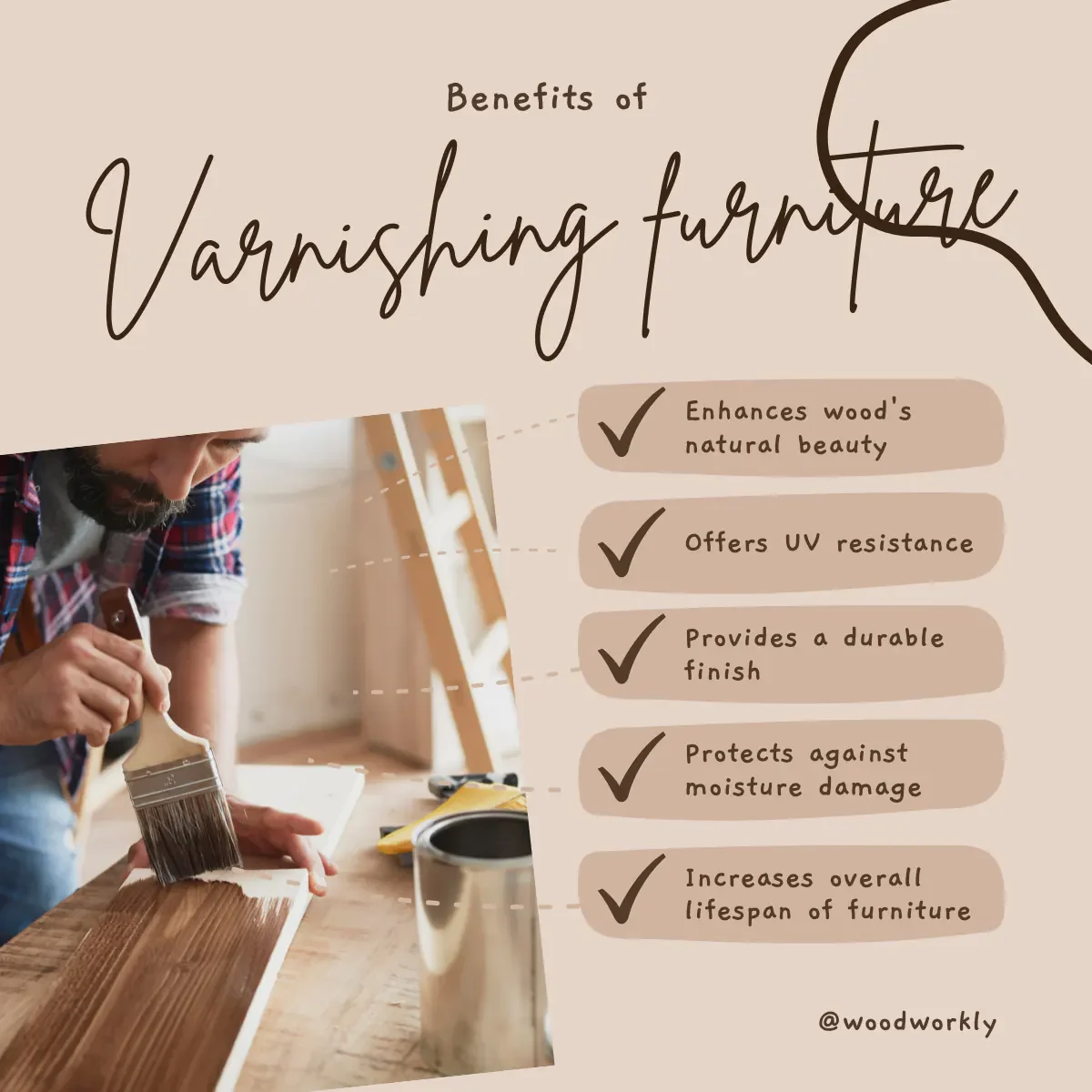
Advantages and Disadvantages of Varnishing Outdoor Wood Furniture
So, let’s dig into what are the advantages and disadvantages you’ll get by varnishing the outdoor wood furniture in order to protect it from the elements.
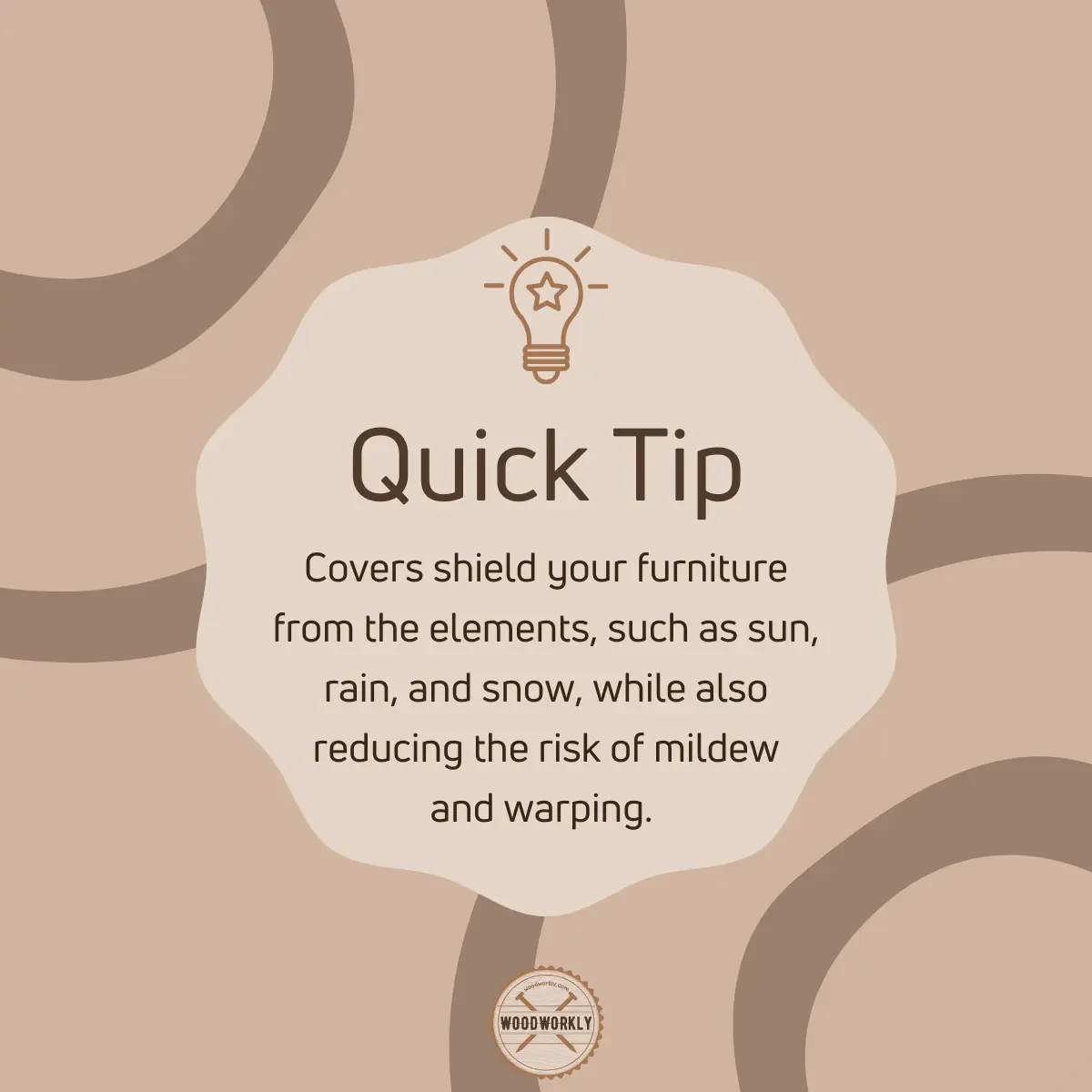
4. Changing the Location of The Furniture
This is what we mostly do whenever we feel that furniture gets damage because of extreme weather conditions.
Actually, this is the best option you can go for if you have space in your garden or any other outdoor area and when you have plenty of areas to keep your loving furniture.
No sealant, paint, varnish, or shellac gives 100% protection from outdoor elements.
Don’t forget, moving your furniture can help protect it:
- Rotate pieces to minimize sun exposure, ensuring even fading and less UV damage.
- Shelter furniture during bad weather, protecting from rain, snow, and moisture issues.
- Position furniture for airflow, allowing faster drying and preventing mildew.
So, I highly recommend you avoid keeping wooden furniture that is open to constant sunlight, higher moisture conditions, and other critical weather conditions because wood is highly sensitive to outdoor elements and has very low natural protection.
Move your outdoor furniture inside the garage during the winter season to avoid harsh weather conditions. Because winter is full of moisture and many finishers, sealants, paints cannot withstand and give the same protection as they gave in other seasons during winter.
So, it’s your job to move furniture to somewhere safe, especially during winter.
Apart from moving the furniture here and there, you can make some shades to avoid catching direct sunlight on the wood surface.
This will prevent furniture from UV damage and shades can absorb or reflect 98% of UV rays and let only visible light go through it.
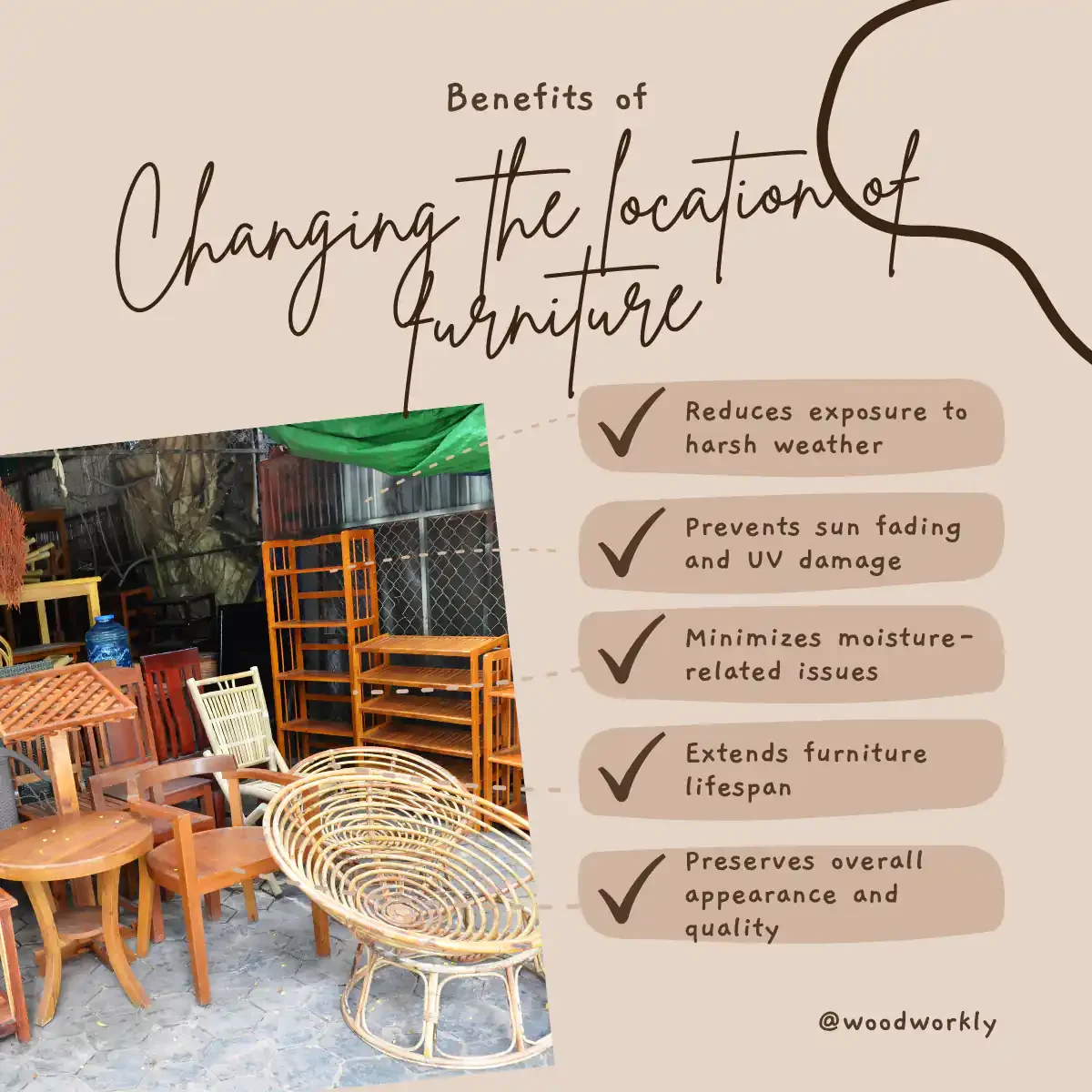
Advantages and Disadvantages of Chaing the Placement Of Outdoor Wood Furniture
So, let’s talk about the pros and cons you’ll get by changing the location of the furniture to protect them from outdoor elements.
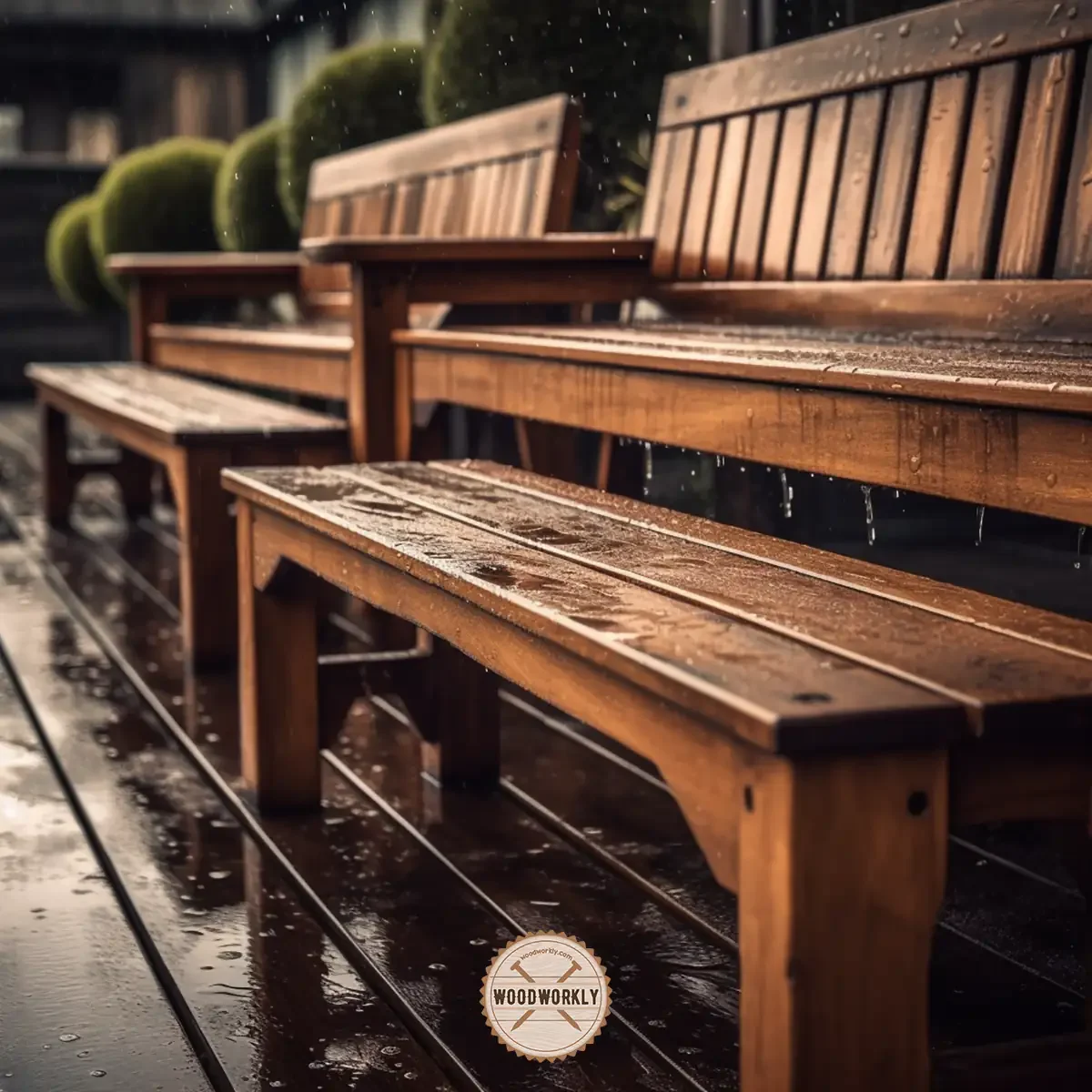
5. Using Covers and Shelters
Covering outdoor wood furniture is an easy method to protect them from outdoor elements.
Keep your furniture safe with these shielding options:
- Furniture covers: Select durable, waterproof materials. Ensure proper sizing and fitting.
- Shelter options: Choose from awnings, umbrellas, gazebos, or pergolas to shield your furniture from the elements.
As a full-time, woodworker, I highly recommend covering your outdoor furniture, especially in harsh weather conditions even though paint or sealant is applied earlier.
With proper coverage, the furniture will protect physically from moisture, rain, UV rays in sunlight, and other bad weather conditions.
You can use patio furniture covers, protective mantle, or other fabrics for this task. But make sure to get them in the right sizes that cover your furniture completely.
Covering is essential for outdoor wood furniture when they’re not in use.
Normal roofs or roofs with UV filters also do great covering from outdoor elements like rain and sunlight.
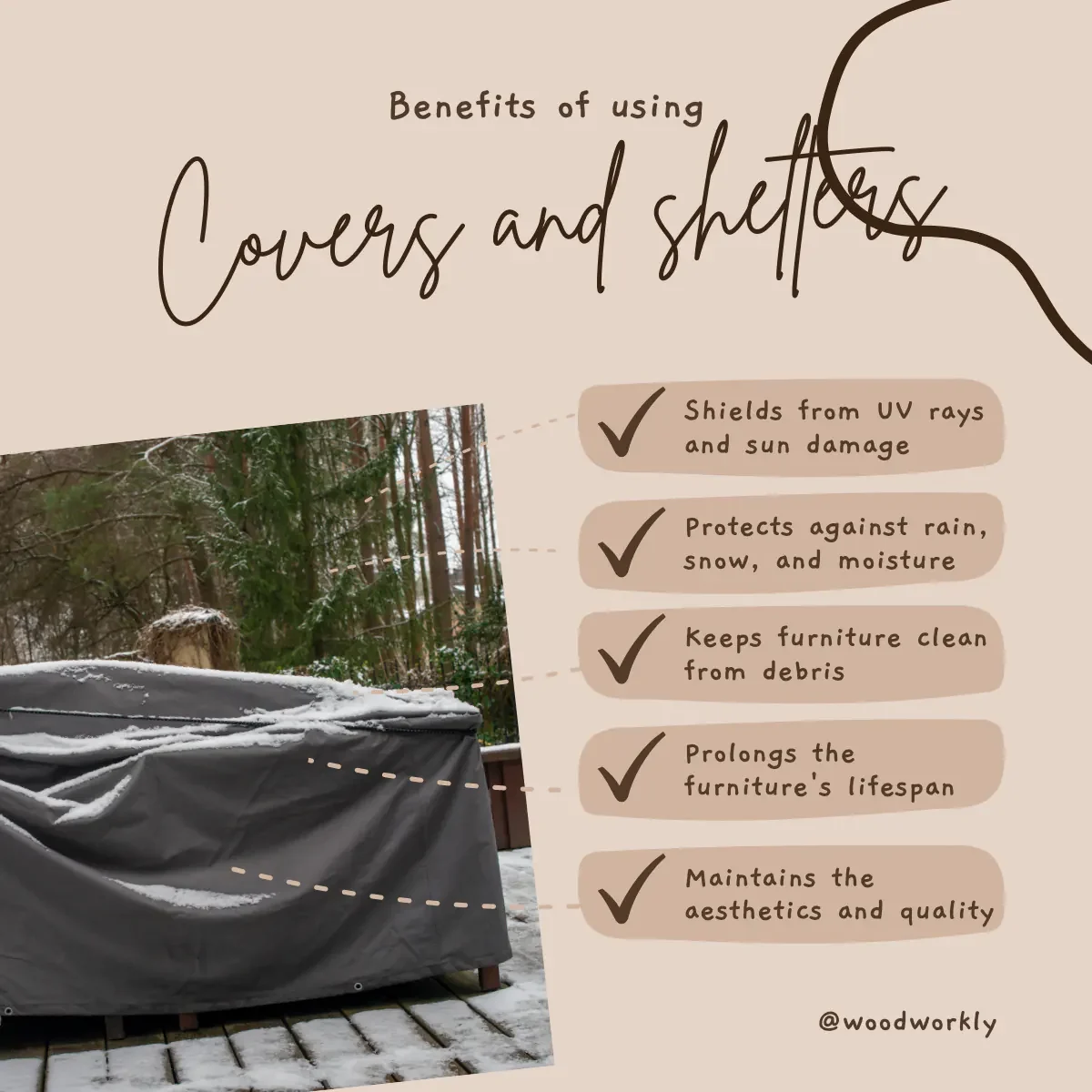
Advantages and Disadvantages of Covering and Sheltering Outdoor Wood Furniture
So, here are some pros and cons of covering your furniture to protect them from outdoor elements.
As you can see, even though covering is a good method to protect your wood furniture, covering without applying prior paint or sealer is not a wise idea.
Covering is a bonus enhancement that strengthens the shield of furniture from outdoor elements.
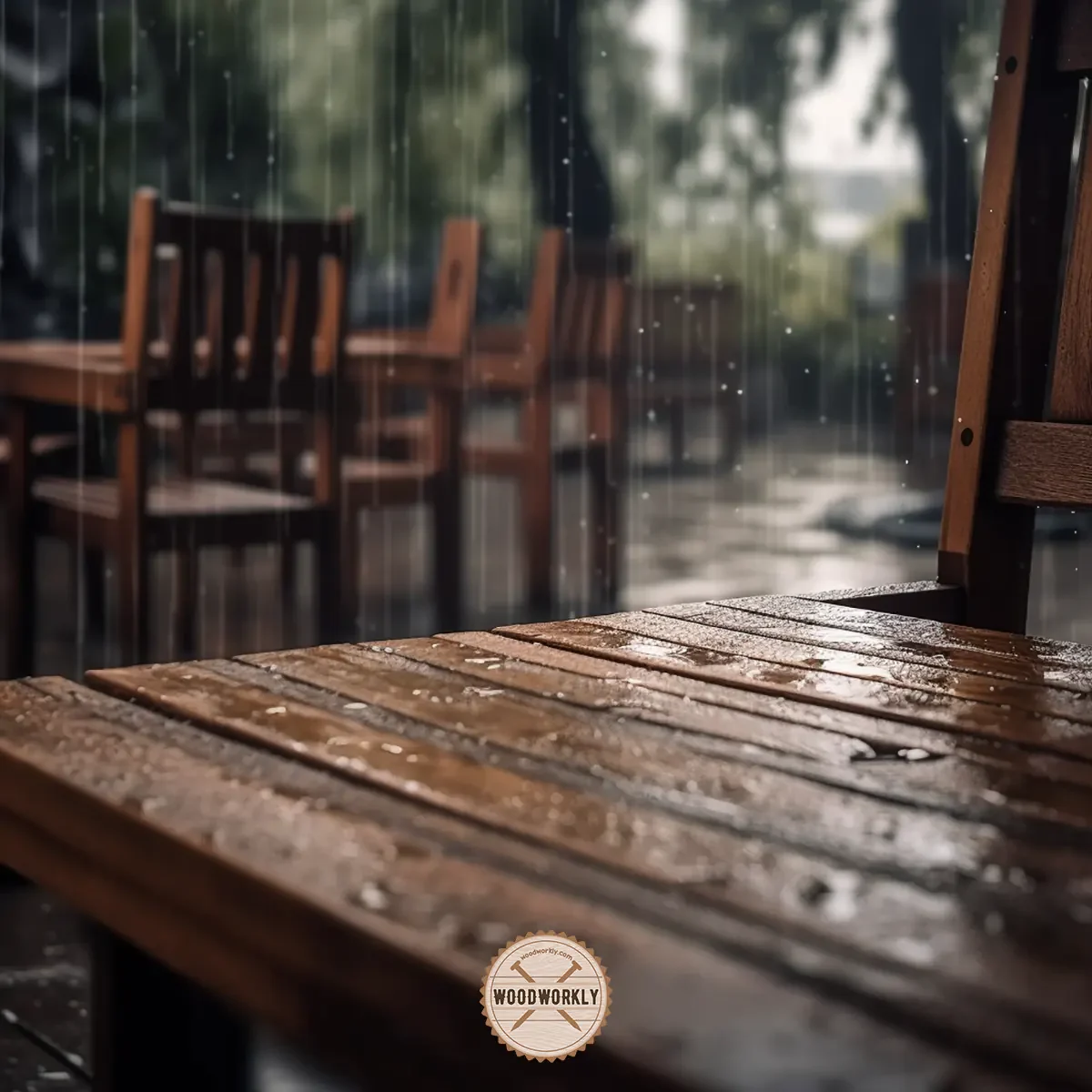
6. Regular Maintenance and Cleaning
Regular cleaning is a must for outdoor furniture, not only to protect them from outdoor elements but also to keep them lifelong.
Mud, mold, and dirt cause the deterioration of the wood.
Don’t forget the importance of routine care:
- Inspect for damage: Check for cracks, rot, and insect damage regularly.
- Cleaning techniques: Gently wipe with a cloth, use mild detergent solutions, or carefully power wash (mind the pressure and technique).
- Seasonal care: Store furniture during the off-season and winterize it to prevent damage.
Cleaning is a must even though the furniture is fully covered or painted. Dirt and mud can easily accumulate on the wooden surface and cause rot.
For a small amount of dust, you can just simply blow away dust using a tack or microfiber cloth.
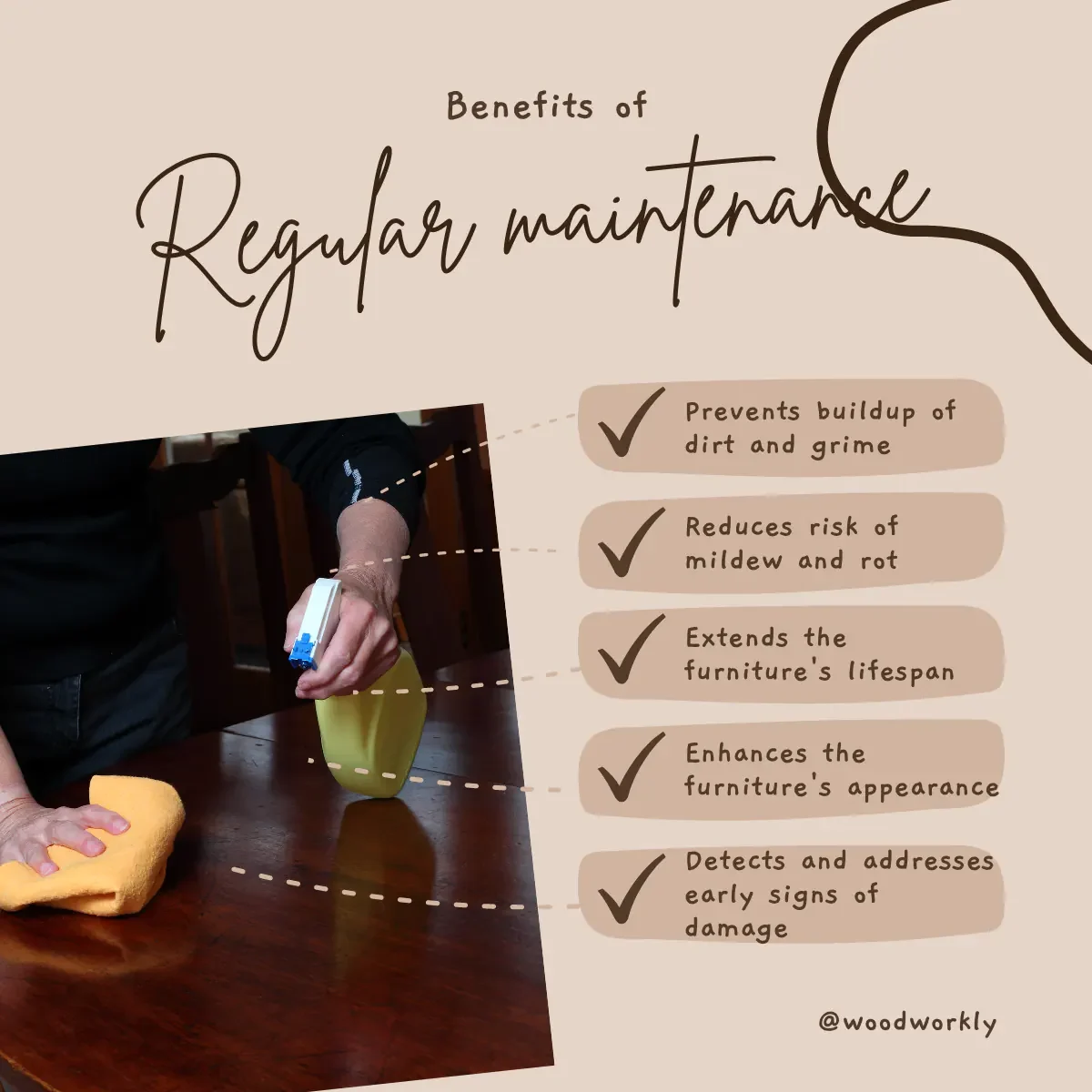
Tack cloth can pick up every bit of dust and make the surface clean 100% perfectly. For a higher amount of dirt, follow the method given below.
Take a sponge, mild dish soap, and warm water and soak a sponge in soap water and wash carefully until soap residues are rinsed away.
Let the furniture dry completely before the placement.
When we look at the advantages and disadvantages of keeping the furniture clean, there are zero disadvantages. So, cleaning gives you lots of benefits with no drawbacks at all.
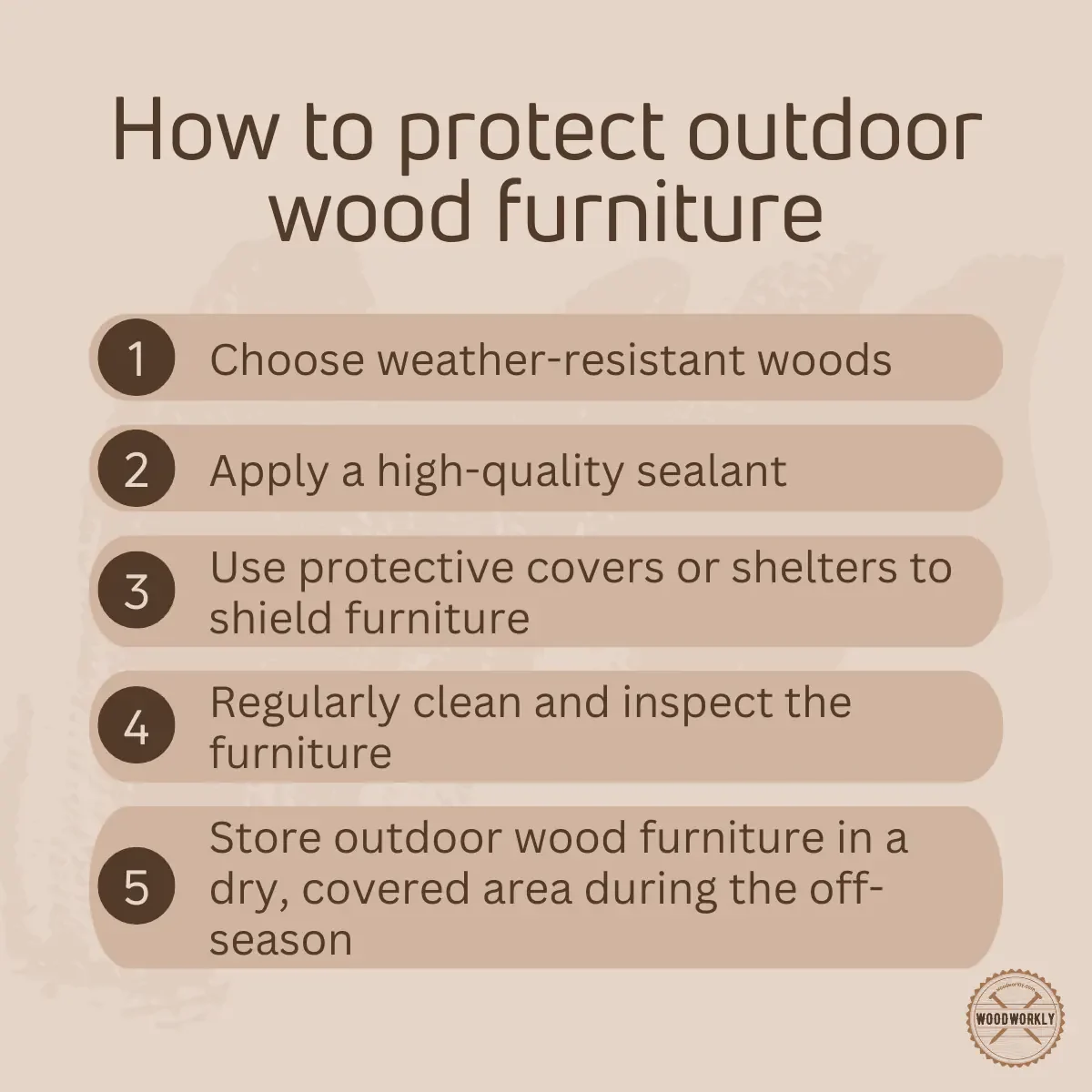
That’s it, folks! now you know the top methods to keep your outdoor wood furniture protected from outdoor elements.
Let’s have a look at some tips which were collected from experts in the industry to protect outdoor wood furniture from elements for a long time.
Tips To Protect Outdoor Wood Furniture from Elements
- Apply a UV-resistant finish: This will help prevent fading and damage from sun exposure.
- Use coasters or placemats: Protect surfaces from moisture and stains during outdoor meals.
- Keep furniture dry: Wipe off excess water after rain to prevent mildew and rot.
- Don’t place furniture near heat sources: Keep it away from fire pits or grills to avoid scorching or warping.
- Use proper cleaning methods: Avoid harsh chemicals that can damage the wood and its protective finish.
- Address issues promptly: Fix loose screws, tighten bolts, and repair cracks as soon as you notice them.
- Keep an eye on weather forecasts: Move furniture under cover during storms or heavy rain to avoid damage.
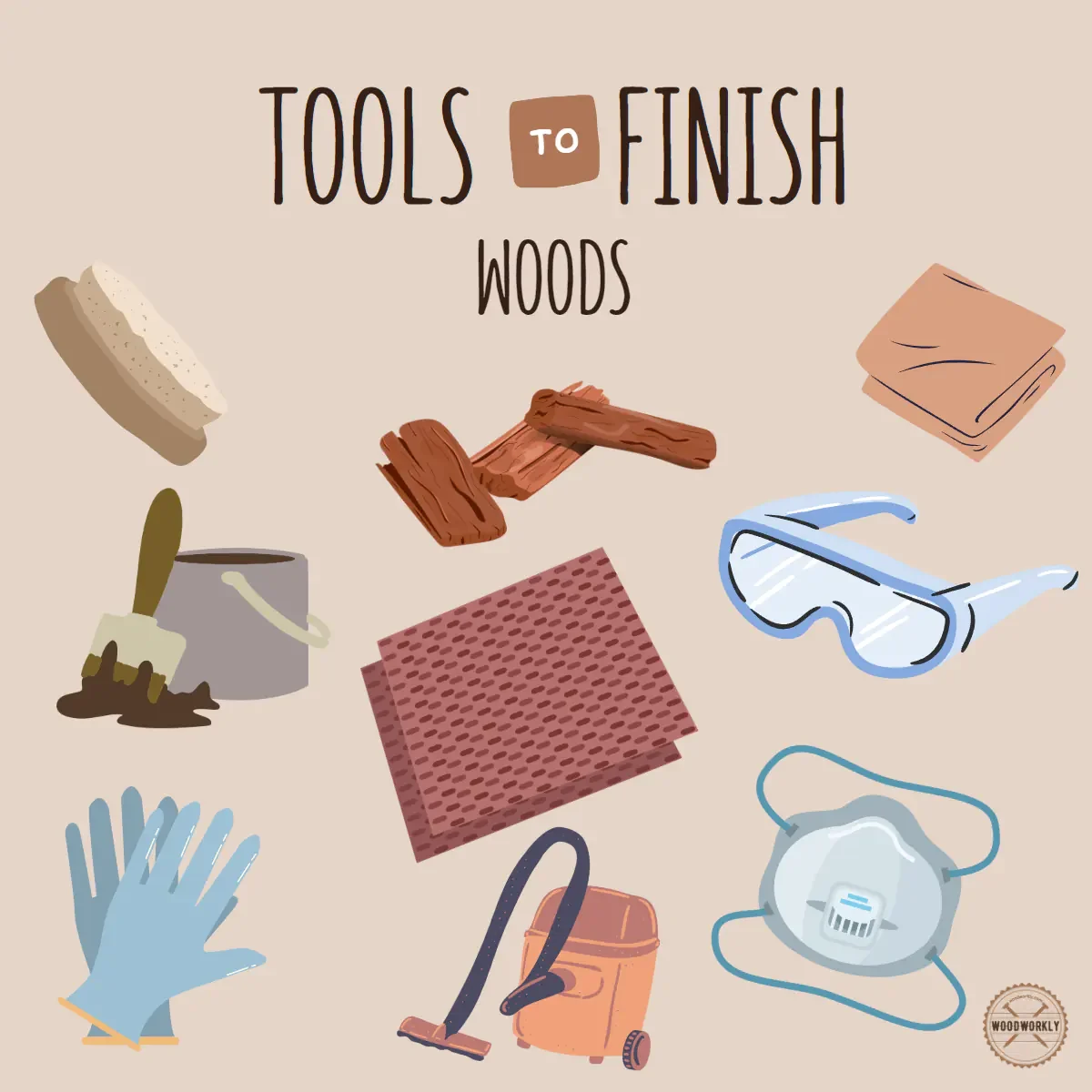
So, let’s take each common outdoor element and discuss how to protect outdoor wood furniture from them.
How Do You Protect Outdoor Wood Furniture from the Sun Damage?
There are two things including sunlight that can damage wood furniture. They are,
- Heat
- UV rays
The heat from the sun can crack and dry out the wood and also lighten the surface over time.
UV rays cause the discoloration of the wood furniture and it’ll damage the wood.
Follow the below steps to protect outdoor wood furniture from sun damage,
- Choose UV-resistant wood: Opt for woods like teak or redwood, which have a natural resistance to UV damage.
- Apply a UV-protective finish: Use a finish designed to block UV rays, such as exterior varnish or spar varnish, to reduce fading and sun damage.
- Cover your furniture: Whenever possible, use covers made from UV-resistant materials to shield your furniture from direct sunlight.
- Provide shade: Install awnings, umbrellas, or other shade structures in your outdoor area to minimize sun exposure.
- Rotate furniture: Regularly change the position of your furniture to ensure even fading and reduce UV damage.
- Regular maintenance: Periodically inspect your furniture for signs of sun damage, and reapply the UV-protective finish as needed to maintain its effectiveness.
By following these guidelines, you can effectively protect your outdoor wood furniture from sun damage, ensuring it remains beautiful and functional for many years to come.
To keep your wood furniture outdoors for last long, select high-quality wood is highly important and less likely to fade over time.
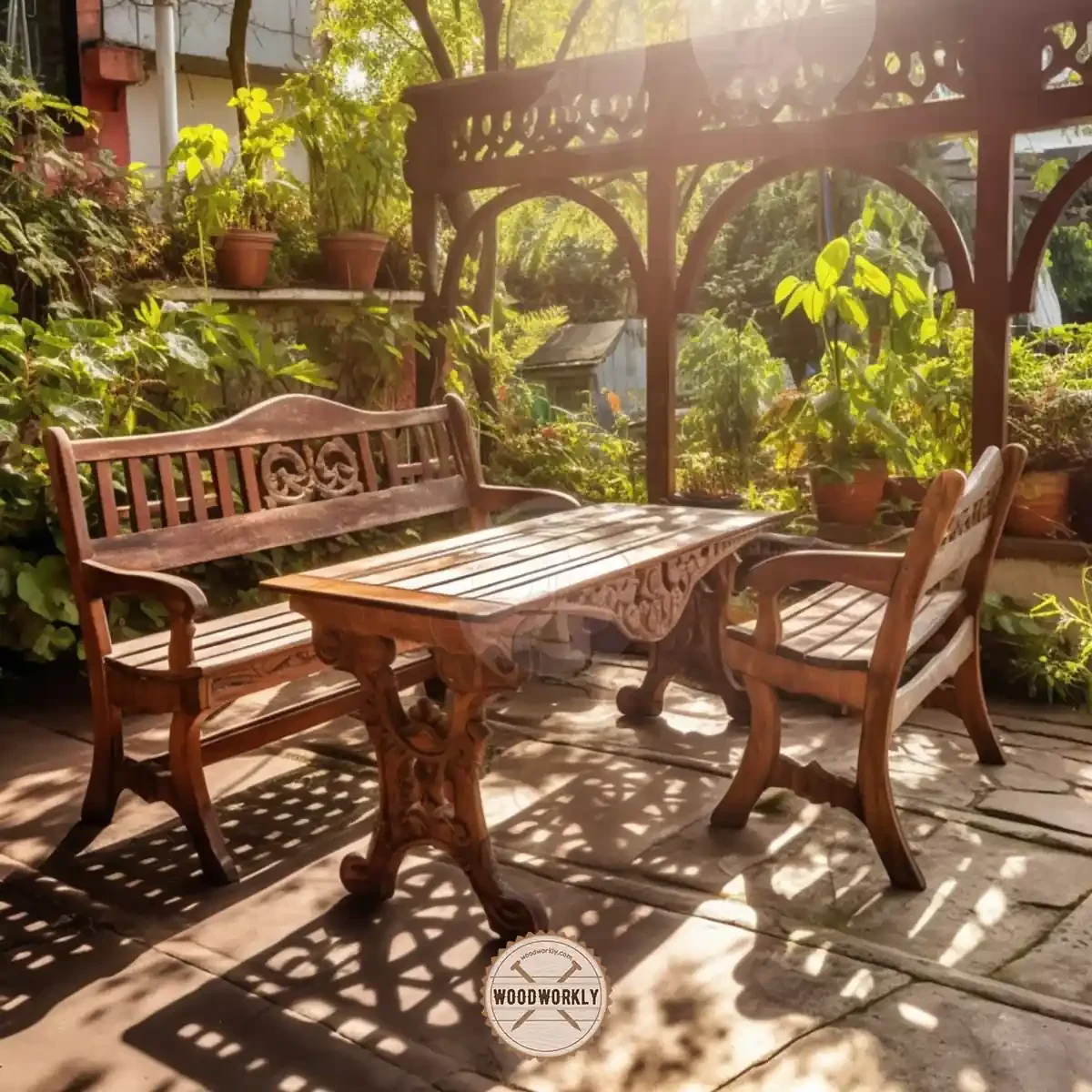
How Do You Protect Outdoor Wood Furniture from Rain?
Rain is considered one of the main elements that can ruin your wood furniture more quicker. So, protection from rain is a must.
Rain can wreak havoc on your outdoor wood furniture, causing it to rot, warp, and become unstable.
Follow the below steps to protect outdoor wood furniture from rain,
- Choose moisture-resistant wood: Opt for woods like cedar, teak, or eucalyptus, which naturally resist moisture and decay.
- Apply a water-repellent finish: Use a waterproof sealant or varnish to prevent rainwater from seeping into the wood.
- Cover your furniture: Invest in high-quality furniture covers made from waterproof materials to protect your pieces from rain and moisture.
- Move furniture under shelter: During inclement weather, move your furniture under cover, such as a gazebo or pergola, to keep it dry.
- Ensure proper drainage: Place your furniture on a well-drained surface to prevent standing water from causing damage.
- Maintain airflow: Position your furniture in a way that promotes good airflow, allowing it to dry out faster after rain.
- Regular maintenance: Inspect your furniture for signs of water damage, and reapply the water-repellent finish as needed to maintain its effectiveness.
Hereby painting, sealing, and varnishing you’ll be able to make the wood layer waterproof.
Plus, by covering and changing the location of the furniture, you can avoid the wood from facing rain.
In my experience, I do recommend both.
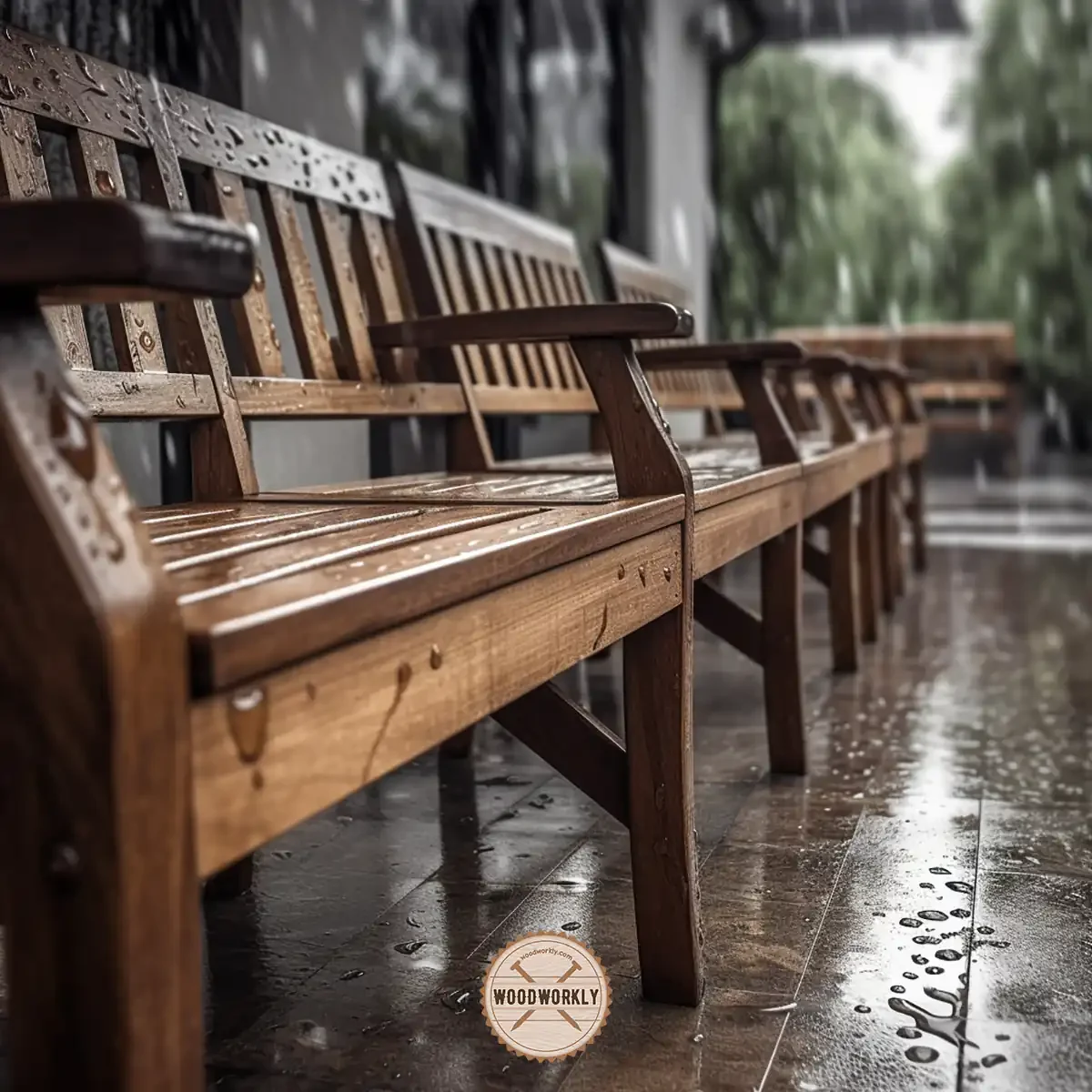
Waterproofing and preventing the furniture from facing rain both are important to protect the furniture. In case if the furniture is too heavy or cannot move, waterproofing is also enough.
When it’s raining, the water droplets will place on top of the wooden surface, and they tend to penetrate inside the wood through the porous structure of the wood.
This cannot be avoided naturally because every type of natural wood absorbs water. These penetrated water molecules will stay inside for long and start wood rotting.
So, eventually, your beautiful outdoor wood furniture will get damaged from the inside.
Once you notice that, you can reverse it back and the wood is totally finished. The only option is to do the woodworking from the beginning with new wood.
So, it is your responsibility to waterproof the wood and take the relevant steps to prevent rainwater droplets to get inside of the wood.
how to protect outdoor wood furniture from mold?
Follow the below steps to protect your outdoor furniture from mold,
- Regular Cleaning: Keep your furniture clean by wiping it with a mild detergent solution and a soft cloth, removing dirt and debris that can promote mold growth.
- Maintain Good Airflow: Position your furniture in a well-ventilated area, allowing air to circulate and preventing moisture buildup that can lead to mold formation.
- Apply a Mold-resistant Finish: Use a sealant or varnish with mold-resistant properties to create a protective barrier against mold spores.
- Use Waterproof Covers: Invest in high-quality, breathable furniture covers to shield your wood furniture from excess moisture without trapping it underneath.
- Avoid Prolonged Moisture Exposure: If possible, move your outdoor furniture to a sheltered area during heavy rain or extended periods of high humidity.
- Inspect for Damage: Regularly check for signs of mold, mildew, or rot. Address any issues promptly to prevent further damage.
- Store Properly During Off-season: If you live in a region with harsh winters, consider storing your outdoor wood furniture indoors or under a shelter to protect it from moisture and prevent mold growth.
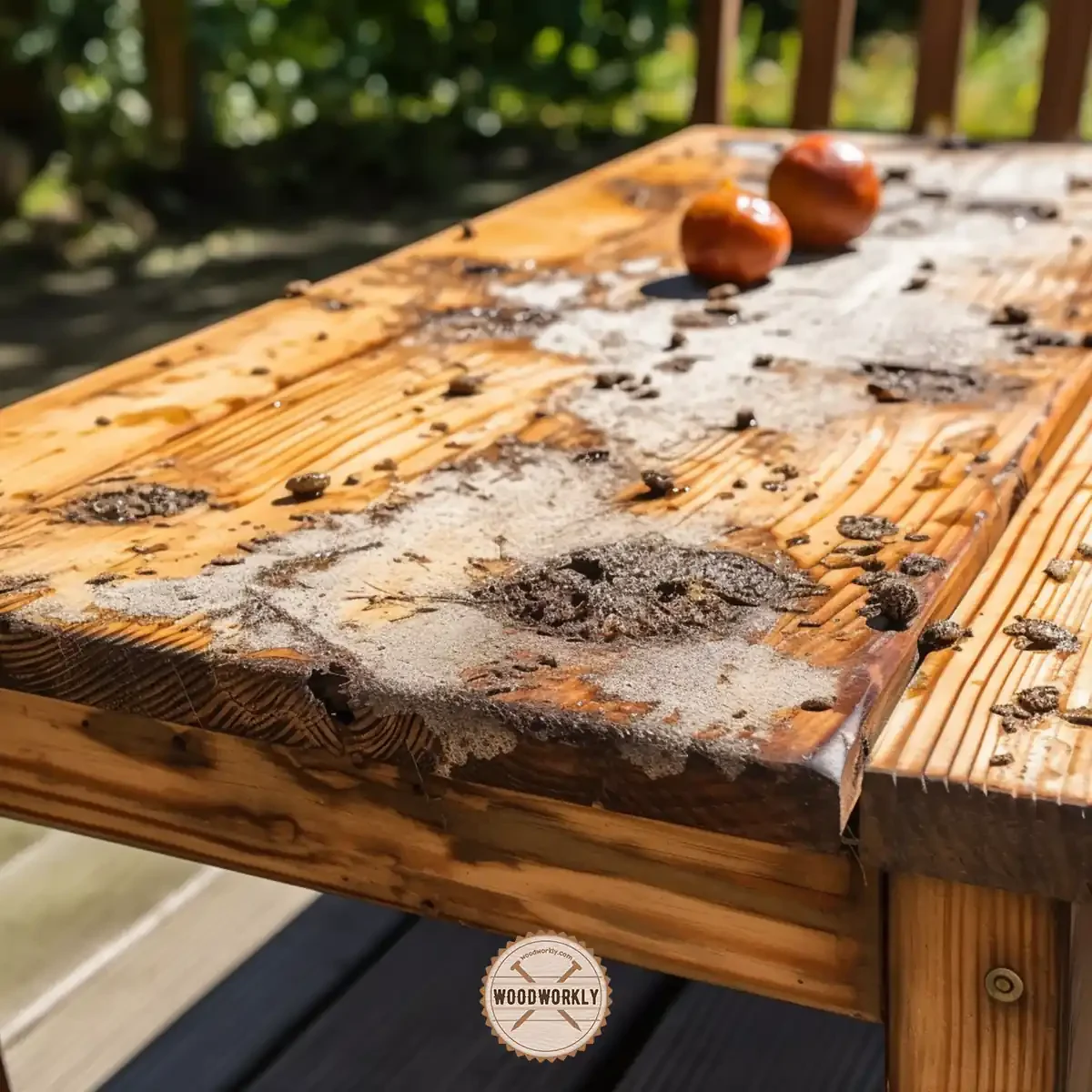
So, let’s learn how to waterproof your outdoor wood furniture properly before the crisis.
How To Waterproof Wood Furniture for Outdoors?
Waterproofing protects your wood from outdoor elements like rain and moisture.
Here’re the methods to waterproof wood furniture outdoors,
- Waterproof using tung oil or linseed oil
- Waterproof using sealants like polyurethane, varnish, or lacquer
- Use stain-sealant combo to finish and waterproof outdoor furniture
So, let’s discuss each of the above methods separately to waterproof outdoor wood furniture effectively.
How To Waterproof Outdoor Furniture Using Tung Oil or Linseed Oil?
Waterproof using tung oil or linseed oil is known as the easiest, most affordable, and quickest way to waterproof wood furniture for outdoors.
Here’re the steps you need to follow when waterproofing furniture using tung or linseed oil,
- Clean the furniture
- Sand the surface
- Choose the oil type
- Prepare the oil
- Apply the oil
- Allow the oil to penetrate
- Wipe away excess oil
- Apply additional coats of oil
- Cure the finish
Let’s discuss each of the above steps in detail to get a good view of waterproofing outdoor furniture to protect them from outdoor elements.
1. Clean The Furniture
Begin by cleaning your furniture thoroughly, and removing any dirt or debris. You can use a mild detergent solution and a soft-bristled brush, followed by a rinse with water. Allow the furniture to dry completely before proceeding.
2. Sand The Surface
Lightly sand the furniture with fine-grit sandpaper (around 220-grit) to remove any old finish and create a smooth surface for the oil to penetrate. Wipe away any dust with a clean, dry cloth.
3. Choose The Oil Type
Both Tung oil and Linseed oil offer water-resistant properties, but Tung oil tends to dry faster and provide a more durable finish. Linseed oil, on the other hand, is more affordable and easier to find. Choose the one that best suits your needs and preferences.
4. Prepare The Oil
If using Tung oil, dilute it with a solvent like mineral spirits or citrus solvent in a 1:1 ratio for the first coat. For Linseed oil, you can use it straight from the container or thin it with a small amount of solvent if desired.
5. Apply The Oil
Using a clean, lint-free cloth or a brush, apply a thin, even coat of the oil to the furniture. Be sure to follow the wood grain for the best results.
6. Allow Oil To Penetrate
Give the oil ample time to penetrate the wood. For Tung oil, this may take around 30 minutes to an hour, while Linseed oil can take up to 24 hours.
7. Wipe Away Excess Oil
Use a clean cloth to remove any excess oil that hasn’t been absorbed by the wood.
8. Apply Additional Coats Of Oil
For optimal protection, apply at least two to three coats of oil. Allow each coat to dry and penetrate the wood before applying the next. Remember to lightly sand and remove dust between coats for a smooth finish.
9. Cure The Finish
Read more : The Best Natural Gas Grills in 2023
Give the oil ample time to cure and harden. Tung oil usually takes about 5 to 7 days, while Linseed oil can take up to 2 weeks to cure on furniture.
Avoid using the furniture until the finish has fully cured.
After 2-3 coats your wood furniture is mostly waterproof, and you can keep it outdoors without any issues. But make sure to redo the whole process once every few months.
This depends on the weather conditions at your location. For example, if you live in a frequently rainy location, do the process regularly.
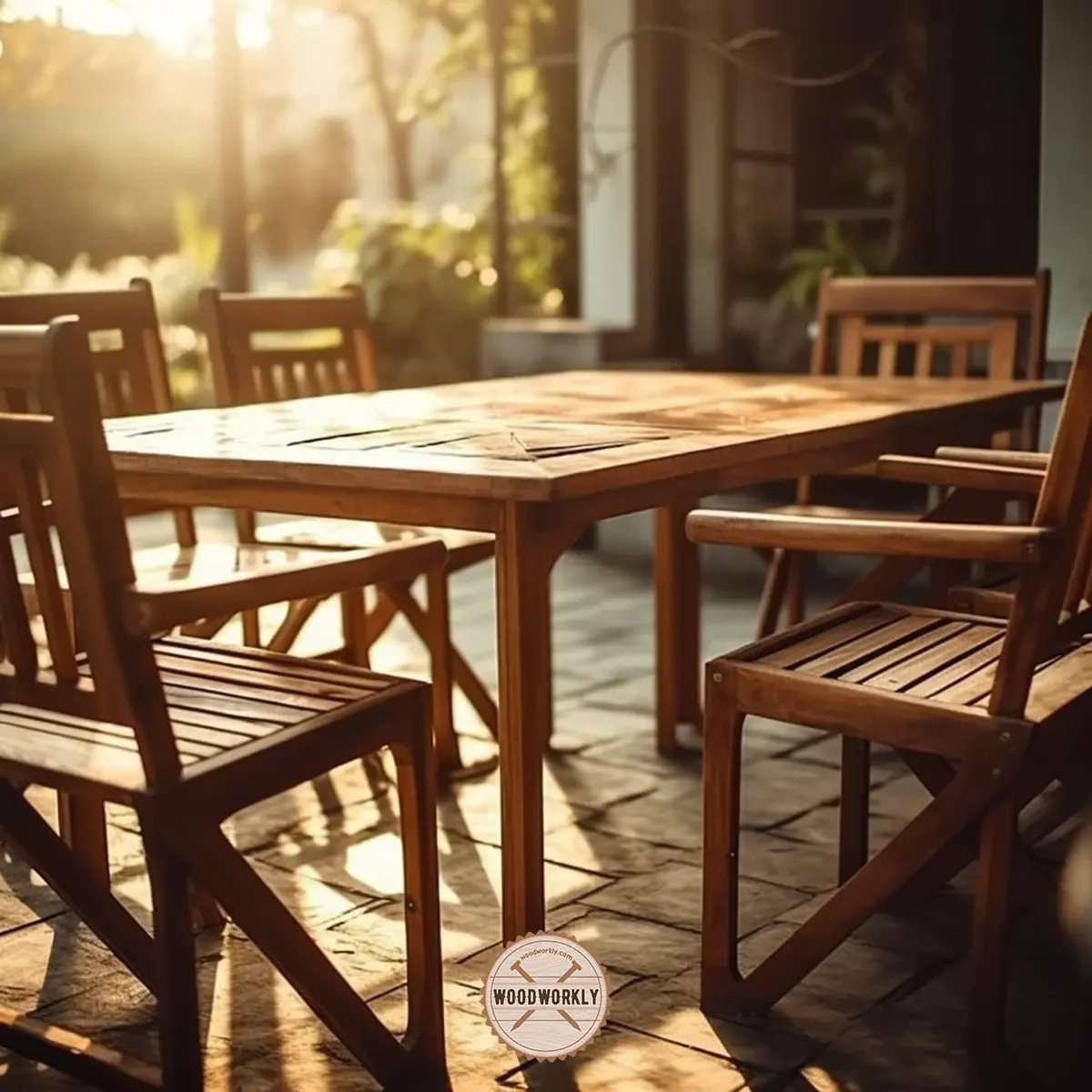
How To Waterproof Outdoor Furniture Using Sealants?
Sealing gives you the best waterproofing than any other method. Sealants have great waterproofing properties.
Polyurethane, lacquer, and varnish are the top sealants you can use to waterproof outdoor wood furniture.
Here’re the steps you need to follow when waterproofing outdoor furniture using sealants,
- Clean the furniture
- Sand the surface
- Choose your sealant
- Prepare the sealant
- Apply the sealant
- Allow it to dry
- Lightly sand and clean
- Apply additional coats
- Cure the finish
Let’s discuss each of the above steps to seal your outdoor furniture properly to tolerate moisture attacks.
1. Clean The Furniture
Begin by cleaning your outdoor furniture thoroughly, removing any dirt or debris. Use a mild detergent solution and a soft-bristled brush, then rinse with water. Allow the furniture to dry completely before proceeding.
2. Sand The Surface
Lightly sand the furniture using fine-grit sandpaper (around 220-grit) to remove any old finish and create a smooth surface for the sealant. Wipe away any dust with a clean, dry cloth.
3. Choose Your Sealant
Select the appropriate sealant for your needs. Polyurethane offers excellent durability and water resistance, while varnish enhances the wood’s natural beauty and provides UV resistance. Lacquer dries quickly and can be easily repaired but may not be as durable as the other options.
4. Prepare The Sealant
Read the manufacturer’s instructions carefully for proper preparation and application. Some sealants may need to be thinned with a solvent, while others can be used straight from the container.
5. Apply The Sealant
Using a brush, roller, or spray, apply a thin, even coat of the sealant to the furniture, following the wood grain. Be sure to work in a well-ventilated area and wear appropriate safety gear.
6. Allow Sealant To Dry
Give the sealant time to dry according to the manufacturer’s recommendations. This can range from a few hours to a full day, depending on the product.
7. Lightly Sand And Clean the Surface
Once the first coat is dry, lightly sand the surface with fine-grit sandpaper to ensure proper adhesion of the next coat. Wipe away any dust with a clean, dry cloth.
8. Apply Additional Coats
For optimal protection, apply at least two to three coats of sealant, allowing each coat to dry and following the sanding and cleaning process between coats.
9. Cure The Finish
Allow the sealant to cure fully, as per the manufacturer’s instructions, before using the furniture. This can take anywhere from a few days to a couple of weeks, depending on the product.
Never stir or shake the sealant before the application, because this can cause air bubbles to trap inside the sealant.
They will remain on the wood even after the wood dries and cannot be removed easily.
Sealant not only gives protection from rain but also from sunlight and UV rays as well.
You can waterproof painted wood furniture outdoors using the same method we discussed.
Read to know, How to Seal Painted Wood for Outdoor Use!
Tung oil or linseed oil or Danish oil waterproofing method is great for people with busy life schedules and beginners in woodworking. Professionals should always go with waterproofing with sealant.
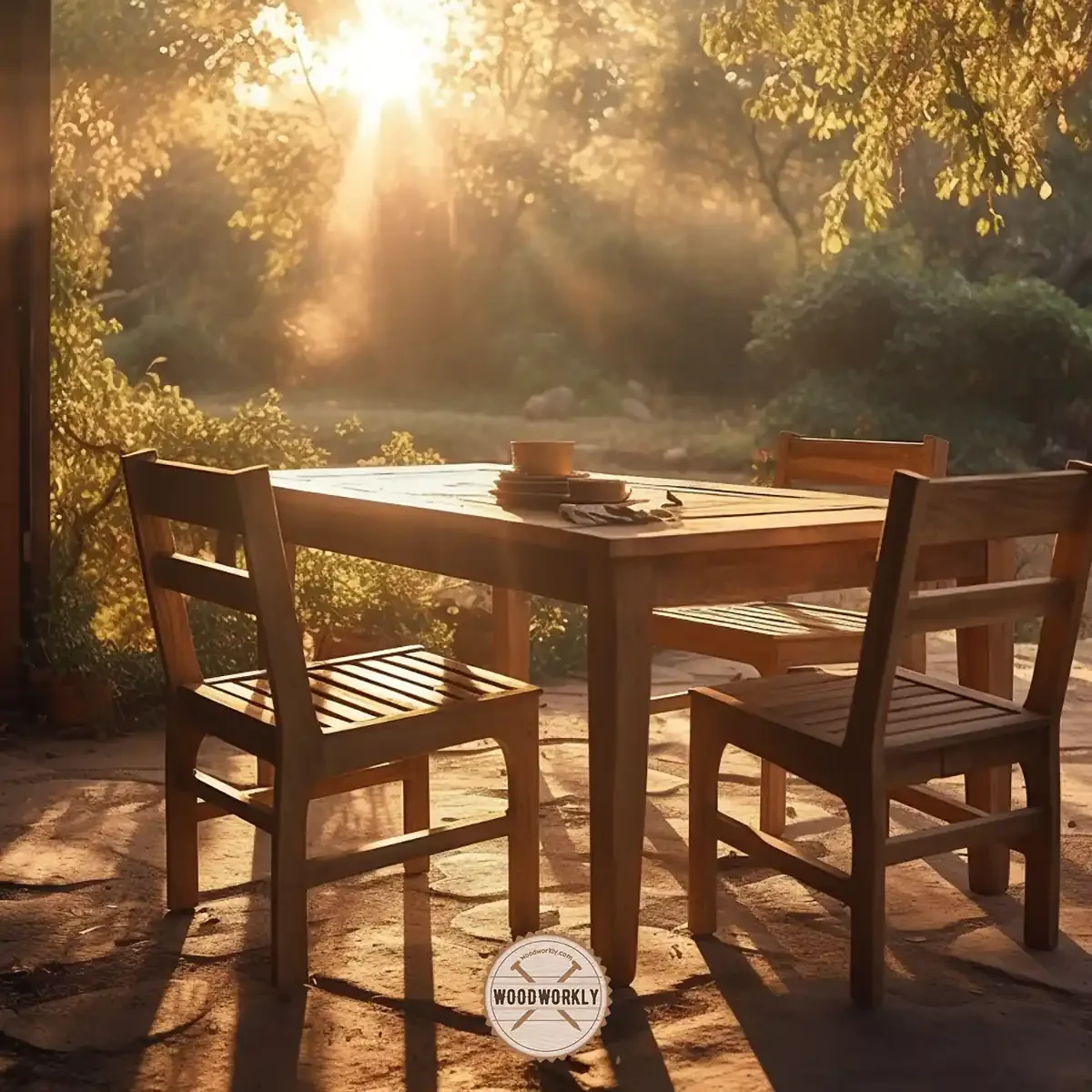
How To Waterproof Outdoor Furniture Using Stain and Sealant?
Combining stain and sealant is an effective way to waterproof outdoor furniture while enhancing its appearance.
This way you can enhance the wood’s color and appearance while providing excellent protection from moisture and water damage.
Here’re the steps you need to follow when waterproofing outdoor furniture using stain and sealant,
- Clean the furniture
- Sand the surface
- Choose your stain
- Apply the stain
- Wipe off excess stain
- Allow it to dry
- Choose your sealant
- Prepare the sealant
- Apply the sealant
- Allow it to dry
- Apply additional coats
- Cure the finish
Let’s discuss each of the above steps in detail to waterproof protect your outdoor furniture so well.
1. Clean The Furniture
Start by cleaning the furniture thoroughly, removing dirt and debris. Use a mild detergent solution and a soft-bristled brush, then rinse with water. Allow the furniture to dry completely.
2. Sand The Surface
Lightly sand the furniture using fine-grit sandpaper (around 220-grit) to remove any old finish and create a smooth surface for staining. Wipe away any dust with a clean, dry cloth.
3. Choose Your Stain
Select a stain suitable for outdoor use, considering factors such as wood type, desired color, and the level of UV protection. Some stains contain added sealants for extra protection.
4. Apply The Stain
Following the manufacturer’s instructions, apply the stain evenly using a brush, roller, or rag. Work in the direction of the wood grain, and be sure to apply it in a well-ventilated area while wearing safety gear.
5. Wipe Off Excess Stain
After allowing the stain to penetrate the wood for the recommended time, use a clean, dry cloth to wipe off any excess stain, ensuring an even finish.
6. Allow It To Dry
Let the stain dry according to the manufacturer’s recommendations, which can range from a few hours to a full day.
7. Choose Your Sealant
If your stain doesn’t include a sealant, choose one that’s compatible with the stain, such as a water-based or oil-based product. Consider factors like durability, UV resistance, and ease of application.
8. Prepare The Sealant
Follow the manufacturer’s instructions for proper sealant preparation. Some products may need to be thinned with a solvent, while others can be applied straight from the container.
9. Apply The Sealant
Using a brush, roller, or spray, apply a thin, even coat of the sealant to the stained furniture, following the wood grain. Work in a well-ventilated area and wear appropriate safety gear.
10. Allow It To Dry
Give the sealant time to dry based on the manufacturer’s recommendations, which can range from a few hours to a full day.
11. Apply Additional Coats
For optimal protection, apply at least two to three coats of sealant, allowing each coat to dry and lightly sanding between coats for proper adhesion.
12. Cure The Finish
Allow the sealant to cure fully according to the manufacturer’s instructions before using the furniture. This can take anywhere from a few days to a couple of weeks, depending on the product.
By following this step-by-step guide, you can waterproof your outdoor furniture using stain and sealant, providing a durable, protective finish that enhances the wood’s beauty and ensures longevity.
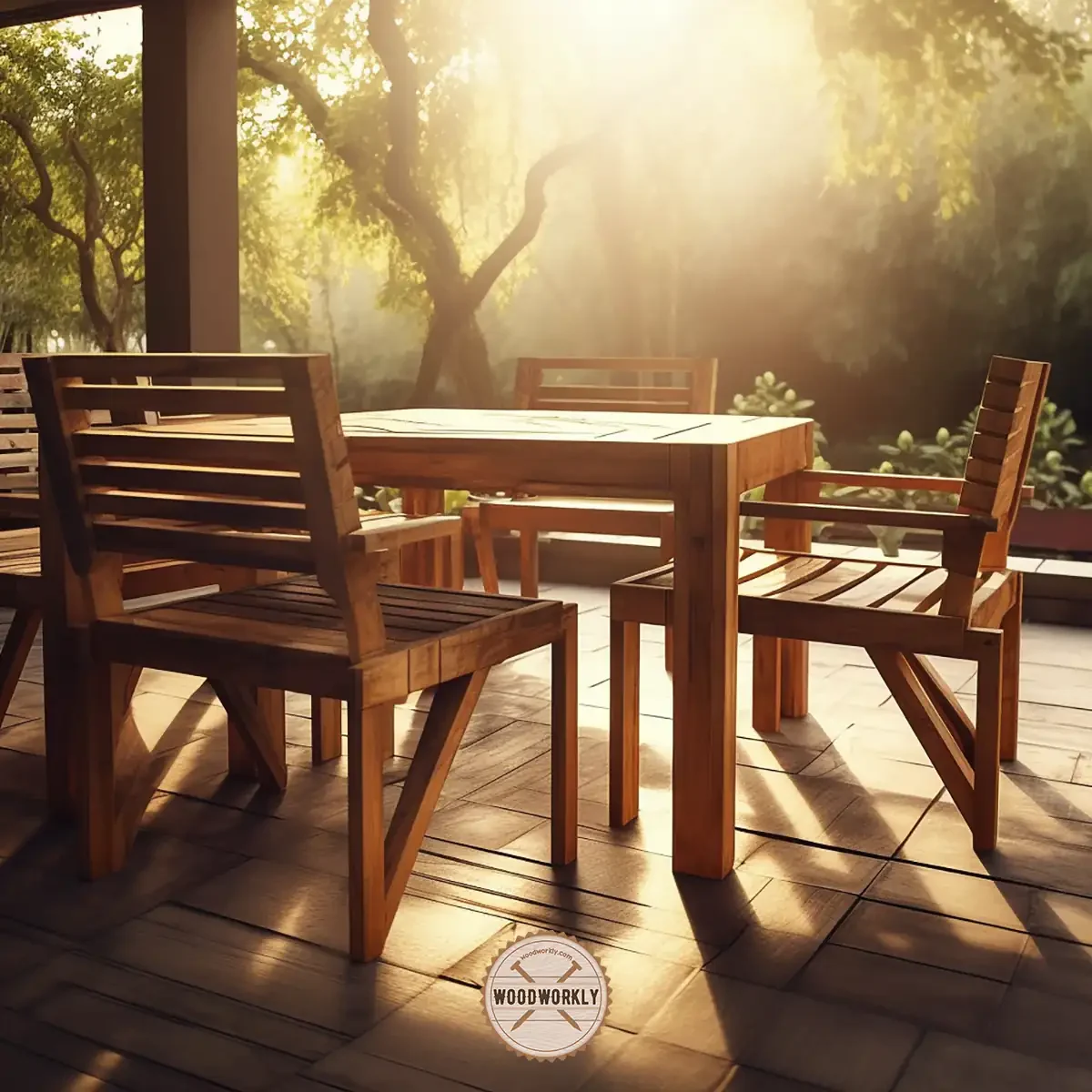
Congrats! Now you know all the possible and effective methods to protect outdoor wood furniture. Let’s give those methods a try!
Let’s answer some frequently asked questions that people ask under, how to protect outdoor wood furniture from elements.
How often should I reapply sealant to outdoor wood furniture?
The frequency of reapplication depends on the type of sealant used and the exposure to outdoor elements. Typically, reapplication of sealant is needed every 1-3 years for outdoor furniture.
Keep an eye on your furniture’s finish, and reapply when you notice it starting to wear or lose its protective properties.
Can I use indoor wood furniture outside if I apply a protective finish?
While applying a protective finish can help, indoor wood furniture is generally not designed for outdoor use.
It’s best to invest in furniture specifically designed for outdoor use, as it will be made of materials and finishes that can better withstand the elements.
How do I clean and maintain outdoor wood furniture?
Regular cleaning and maintenance are essential for prolonging the life of your outdoor wood furniture.
Use a mild detergent solution and a soft brush to gently clean the surfaces, then rinse with water.
Avoid power washing, as it can damage the wood. Inspect for damage, cracks, rot, or insect infestations periodically and address any issues promptly.
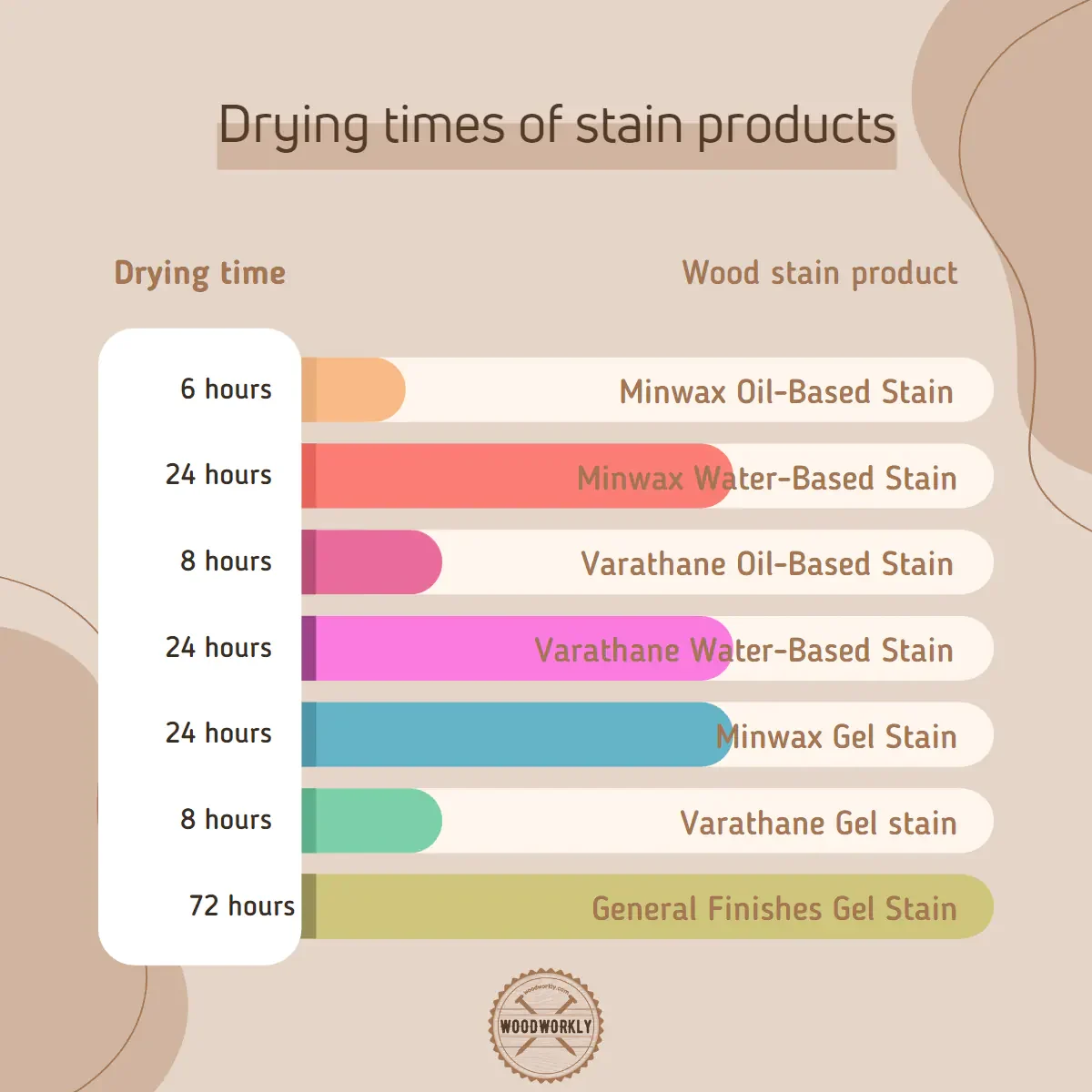
Can I paint my outdoor wood furniture instead of using a sealant?
Yes, painting can be an effective way to protect outdoor wood furniture from the elements. Ensure you use a paint specifically designed for outdoor use, such as acrylic, latex, or oil-based paints.
Painting can provide excellent moisture and UV protection but may conceal the natural beauty of the wood.
What types of wood are best for outdoor furniture?
Several wood types are suitable for outdoor use due to their natural resistance to elements and durability.
Some popular wood choices for outdoor furniture are teak, cedar, redwood, eucalyptus, and acacia.
Consider factors such as maintenance requirements, availability, and cost when choosing wood for outdoor furniture.
Should I cover my outdoor wood furniture when not in use?
AUsing covers for outdoor wood furniture can provide additional protection against moisture, sun damage, and other elements. Select covers made from durable materials that properly fit your furniture.
Consider using shelters like awnings, umbrellas, gazebos, or pergolas for added protection.
Can I store my outdoor wood furniture indoors during the off-season?
Yes, storing your outdoor wood furniture indoors during the off-season, like winter, can help extend its lifespan. Make sure the furniture is clean and dry before storing it.
If indoor storage is not an option, consider using furniture covers or moving it to a sheltered area to protect it from harsh weather conditions.
What should I use on outdoor wood furniture to protect it?
There are various options for protecting outdoor wood furniture, including paints, sealants, varnishes, and stains.
Choose a product that suits your specific needs, taking into consideration factors like appearance, durability, and UV protection.
What is the best sealer for outdoor wood furniture?
The best sealer for outdoor wood furniture depends on your preferences and the type of wood. Water-based sealants, oil-based sealants, and polyurethane are popular choices.
Consider factors like ease of application, durability, and the desired look when selecting a sealer.
How can I protect my wood patio furniture?
Protect wood patio furniture by using appropriate finishes, such as paint, sealant, or varnish. Ensure proper ventilation and placement to minimize moisture-related issues.
Use covers or shelter options like awnings or umbrellas to shield furniture from sun and rain. Regular maintenance and cleaning can also prolong the life of your wood patio furniture.
How should I treat outdoor wood furniture?
Treat outdoor wood furniture by applying suitable finishes like sealants, paints, or varnishes. Regularly inspect the furniture for any damage, and address issues promptly.
Clean the furniture with mild detergent solutions and a soft brush, and provide adequate ventilation and shelter to minimize exposure to the elements.
How can I preserve outdoor wood furniture?
Preserve outdoor wood furniture by applying protective finishes, ensuring proper placement and ventilation, and regularly inspecting and maintaining the furniture.
Consider using covers or shelter options for added protection, and store the furniture indoors or under cover during the off-season.
What is the best protection for wooden garden furniture?
The best protection for wooden garden furniture depends on factors like appearance, durability, and ease of maintenance.
Options include paints, sealants, varnishes, and stains, each with its pros and cons.
Assess your specific needs and preferences when choosing a protective finish for your wooden garden furniture.
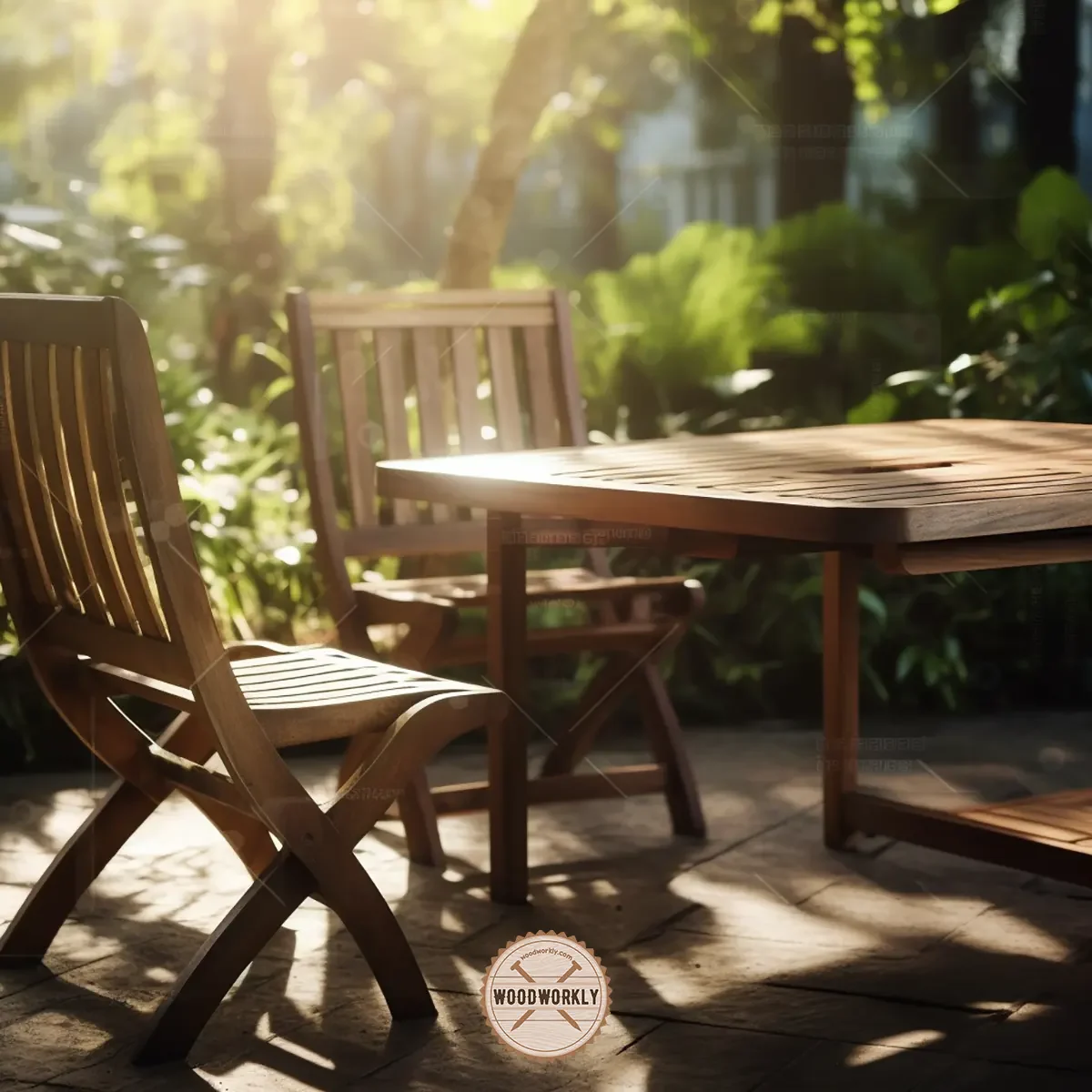
Did I cover all you wanted to know about How to Protect Outdoor Wood Furniture from Elements?
In this article, we mainly discussed how to protect outdoor wood furniture from elements such as moisture, rain, sunlight, and UV rays.
We examined all the possible ways to protect the wood from outdoor elements, we have discussed what are the best sealants you can go for to give the best overall protection to your loving wood furniture.
Apart from that, we have talked about how covering and location changing is important to keep your furniture lifelong.
To protect outdoor wood furniture from elements, apply suitable finishes like paint, sealant, or varnish for moisture and UV protection. Use covers or shelters like awnings and umbrellas to shield furniture from sun and rain. Ensure proper placement and ventilation, and perform regular maintenance and cleaning to prolong the furniture’s lifespan.
Finally, we have discussed waterproofing methods and how to waterproof outdoor wood furniture properly and frequently asked questions.
So, that’s it. Hope you learned everything you wanted to know about how to protect outdoor wood furniture from elements.
I highly recommend giving it a try to protect your outdoor wood furniture by yourself as your next woodworking project.
Hope everything will go perfectly!
Source: https://gardencourte.com
Categories: Outdoor


